

SAFETY: THE SECRETS OF FLYING WITH 'LOGIC KNOWLEDGE'
AVIONICS: HONEYWELL RAISES THE BAR WITH ANTHEM SUITE
SHOWS: NBAA-BACE TAKING CENTER STAGE IN VEGAS



SAFETY: THE SECRETS OF FLYING WITH 'LOGIC KNOWLEDGE'
AVIONICS: HONEYWELL RAISES THE BAR WITH ANTHEM SUITE
SHOWS: NBAA-BACE TAKING CENTER STAGE IN VEGAS
Garmin scores a win with its new head-up display in the Citation Longitude




Scan the QR code to see the mission

Shuts Down Connectivity Network


6 OpsGroup releases GPS spoofing workgroup report
8 Business aviation groups seek European leaders' support 10 GAMA: Bizjet deliveries, billings up in first-half 2024 14 Flying Garmin’s new HUD in the Citation Longitude
Vegas takes center stage for NBAA-BACE 22 AIN Product Support Survey: Engines
Here’s a better idea: Avoid the autoflight fistfight in the first place
Product Support: Above & Beyond

BY MATT THURBER
After spending years and hundreds of millions of dollars building an air-to-ground (ATG) airborne connectivity network to compete with Gogo, SmartSky Networks announced that it “has ceased business operations effective August 16, 2024.” A company statement blamed lack of additional financing for the shutdown.
Like most in the industry, an aviation manager in New York was taken by surprise by the shutdown. His company had installed a SmartSky system in the principal’s airplane in February at a cost of $150,000. “[The] system performance is great,” he posted on Facebook. “[It] blows away Gogo L5. [I’m] not looking forward to this conversation with the owner.”
The SmartSky service promised faster connectivity compared to Gogo’s original ATG. SmartSky’s network went live at the end of 2021 and into early 2022. The service had been delayed for many years as SmartSky built a network of towers in the U.S. and fought court battles over the network technology’s patents, including complaints against Gogo. But installations in turboprops and business jets seemed to pick up as more dealers signed up and supplemental type certificates were approved for SmartSky equipage.
Employing patented “beamforming” technology, SmartSky claimed that each aircraft using the network would have its own beam and switch from beam to beam, maintaining high-speed bandwidth for that aircraft instead of having to share it with others.
Two sizes of equipment were available, SmartSky Lite for smaller aircraft, and the Flagship system for midsize jets and larger. The Lite system, with sustained speed of 3 to 6 Mbps and peak over 15 Mbps, was priced at about $60,000. Flagship sold for about $120,000 and delivered speeds of 5 to 10 Mbps, peaking over 20 Mbps. Service plans included Lite at $995 (hourly) to $3,495
(unlimited) and Flagship: $3,495 per month for 5 GB, $299 per GB overage, with unlimited plans topping out at $9,995 per month.
None of the dealers or others contacted by AIN could confirm how many SmartSky installations had taken place. However, some details provided suggests installations never reached a significant number.
Fleet operator Volato had planned to equip its HondaJets with SmartSky. “Luckily, we only had the first one installed,” Volato co-founder and CEO Matt Liotta told AIN “We had five more scheduled for this year, but aircraft [delivery] delays saved us.”
One dealer said it had installed one SmartSky system. Another said, “We had just been added to the dealer network for SmarkSky within the past two weeks. We had never even quoted a single job or ordered any parts. We did have one customer who was interested in the system but again, we had not progressed past the discussing phase.”
Another large MRO facility said it had not installed any SmartSky systems since becoming a dealer. The same was the case for a large MRO company with multiple bases, which told AIN, “There wasn’t a lot of interest in it.”
Davinci Jets had plans to equip its entire fleet with SmartSky systems and had accomplished some installations, but the company did not respond to AIN’s queries. SmartSky co-founder and president Ryan Stone was previously chairman, CEO, and co-founder of Davinci Jets, and he told AIN he couldn’t comment on the shutdown.
AIN tried to contact the email that was published on the SmartSky website after it announced the shutdown, but there has been no reply. AIN also asked Honeywell about its relationship with SmartSky and plans for customers but received no reply. Honeywell Forge was the customer support provider for SmartSky. z
Business jet OEMs reported strong order intake and a nearly 2% backlog growth in the second quarter, while flight operations rose by 6% quarter over quarter and departures remained 14% above second-quarter 2019 levels, according to Global Jet Capital’s (GJC) latest Business Aviation Market Brief. “Due to the industry’s inherent value proposition… there has been a systemic expansion of the user base with a substantial proportion of these new users continuing to utilize business aviation in 2024,” GJC stated. As supply chain and labor issues continue to resolve post-pandemic, airframers increased production and revenues, causing the industry-wide book-to-bill ratio to about 1:1.
Pilatus Aircraft is significantly scaling up its presence in the U.S. under an agreement to develop a “flagship” sales and service facility at Sarasota Bradenton International Airport (KSRQ) in Florida. Long-term plans also include having an aircraft assembly plant at the location. Under the agreement, Pilatus will develop 17 acres on the north side of the airport. Slated to open in mid-2026, the initial facility plans include 54,000 sq ft dedicated to maintenance, spare parts distribution, and new aircraft deliveries, plus 17,000 sq ft of workshops, o ce, and administrative space.
The U.S. Army selected Sierra Nevada Corp. (SNC) as system integrator for the High Accuracy Detection and Exploitation System (Hades) program. Hades aircraft are based on the Bombardier Global 6500. This month, Bombardier will hand over the first aircraft, which will then undergo systems integration at SNC.


BY MATT THURBER
After forming a workgroup to study the issue of GPS/global navigation satellite system (GNSS) spoofing, flight operations support provider OpsGroup has released its GPS Spoofing Final Report, identifying key issues and mitigation efforts.
Spoofing occurs when a GPS/GNSS receiver is tricked into calculating a false position by equipment transmitting from the ground. This can show the aircraft in a different location than its actual position and prompt the navigation system to send the aircraft off the desired course.
According to the OpsGroup report, “The greatest safety concern is the degraded functionality of the ground proximity warning system. The system does not operate correctly after spoofing, even if GPS coverage is restored. The number of false alerts is astounding. There is an increasing normalization of risk.”
Once a GPS receiver is spoofed, it could be contaminated with false data, the group warned. “This places doubt on the use of GPS at any point after spoofing, especially RNP [required navigation performance]
approaches, and RNP en route use.”
OpsGroup has noted a 500% increase in spoofing this year, now affecting an average of 1,500 flights per day, up from 300 per day in the first half of the year. A major concern is that flight crew aren’t being provided technical information about “GPS involvement in aircraft systems” and they are receiving “conflicting crew guidance and incomplete or insufficient procedures, all leading to misunderstandings and knowledge gaps.”
While OpsGroup acknowledged that there are “no quick and easy solutions…The key focus in the short term is on mitigation, crew awareness, guidance, and training. In the longer term, the workgroup identified potential solutions to hardware, avionics, and system components…Consideration must be given to the potential for a deepening of the GPS vulnerability problem. In mid-2024, we are already seeing a major increase in both spoofing and impact to aircraft.”
The group did note that “the over-reliance on GPS for primary navigation places great importance on preserving a sufficient network of conventional ground-based navaids.” z

Bombardier is projecting stable deliveries of 150 to 155 business jets per year for the foreseeable future, with the mix remaining even between its super-midsize Challengers and ultra-long-range Globals, the company said last month at the Je eries Global Industrials Conference. The even mix of products comes with the order momentum for the Challenger 3500 and the model’s better supply-chain environment. Bombardier anticipates delivering the initial Global 8000s next year, transitioning fully from its 7500 predecessor in 2026. Je eries is forecasting 35 to 40 Global 8000 deliveries annually.
The U.S. Department of Justice (DOJ) seized Dassault Falcon 900EX S/N 007—registered as T7-ESPRT—that it claims was owned and operated for the benefit of Venezuelan president Nicolás Maduro Moros and persons a liated with him. According to the DOJ, the trijet was seized in the Dominican Republic and transferred to the Southern District of Florida at the request of the U.S. “based on violations of U.S. export control and sanctions laws.” According to the U.S. investigation, in early 2023 persons a liated with Maduro allegedly used a Caribbean-based shell company to conceal their involvement in the purchase of the 900EX from Floridabased aircraft broker Six G Aviation. Six G did not respond to AIN’s inquiries.
DirecTV Inflight and Satcom Direct are bringing live television to business aircraft equipped with low-earth or geostationary orbit satellite connectivity. The DirecTV IPTV content includes sports, news, weather, and other entertainment programming. Aircraft operators can purchase IPTV as part of Satcom Direct connectivity service plans.

We were meant to fly.
BY CHARLES ALCOCK
The European Business Aviation Association (EBAA) and the General Aviation Manufacturers Association (GAMA) are demanding action from governments and regulators to help the industry achieve its goal of net-zero carbon emissions by 2050. In a joint letter published on September 9, the industry groups spelled out their key lobbying points for the 2024 to 2029 European Union (EU) legislative period.
Among the main calls to action is for the incoming European Commission and Parliament to reform the ReFuelEU regulation to include “a reliable, fraud-proof” book-andclaim system for sustainable aviation fuel (SAF) that would be recognized by the EU’s emissions trading scheme. According to EBAA and GAMA, this would “send strong market signals” to SAF producers and help to reduce “currently excessive” SAF prices and create a single market for the fuel.
The new European Business Aviation Manifesto also calls for business aviation to be admitted to the EU’s Sustainable Finance Taxonomy to give the industry access to financing required for fleet renewal with newer, cleaner, and quieter aircraft. In July, EBAA joined Dassault in legal action against the European Commission, which excluded business aviation from this legislation.
EBAA said the exclusion from the so-called EU Taxonomy classification system for identifying approved sustainable economic activities makes it harder for companies in the sector to access sustainable investments and “green” financing.
According to EBAA secretary general Holger Krahmer, business aviation was excluded on ideological grounds and served to discourage investment in decarbonization.
“We stand ready to engage with all stakeholders and continue being the bridge

between the European business aviation industry and policymakers,” he said. “By focusing on our three key policy pillars, we look forward to advancing discussions on solutions that will facilitate our members’ uptake of SAF and ensure a fair, nondiscriminatory playing field for business aviation, granting equal access to airports and financing to develop net-zero propulsion technologies.”
The EBAA and GAMA lobbying alliance is also focused on opposing the threat of “severe taxes,” and operating restrictions.
More specifically, the manifesto urged caution to ensure that any planned reporting obligations for non-CO2 emissions are both technically feasible and do not place an undue administrative and logistical burden on aircraft operators. The groups insisted that distinctions need to be made between small and large emitters when it comes to settling the methods for data collection.
The business aviation lobbyists expressed concern that the anticipated rules covering measurement, reporting, and verification of non-CO2 emissions could be used as the basis for an additional tax on these emissions. They argued that this would be unfair on the grounds that there is no scientific consensus on either the impact of non-CO2 emissions or the most appropriate measures for mitigating them. z
Duncan Aviation last month completed the first installation of a Gogo Galileo HDX electronically steered antenna on a Bombardier Challenger 300, and flight testing of the lowearth-orbit satellite communications system is now underway. Galileo, which will launch commercially later this year, runs on the Eutelsat OneWeb satellite network. HDX, the smaller of two antennas that Gogo will o er, will be available in the first half of 2025. Service speed for the HDX system is up to 60 Mbps download and 11 Mbps upload, while the larger FDX antenna will allow 195 Mbps download and 32 Mbps upload.
FlyExclusive inked a deal to take over the management services for Volato’s fleet, as well as much of the fractional ownership and charter provider’s business. FlyExclusive will manage flight operations, sales, and expenses of Volato’s 13 fractional aircraft, eight leased aircraft, and four managed aircraft. Volato has operated the largest HondaJet fleet in the U.S. and recently added the Gulfstream G280 to its fractional fleet. FlyExclusive plans to transfer Volato aircraft to its operating certificate and in the interim is executing flights for Volato.
AOPA is warning general aviation aircraft operators of the prospect of new landing fees in Florida that could take e ect this month. The state has contracted with Virtower to collect aircraft movement data at airports using ADS-B. Virtower has partnered with Vector Air Systems to use the Virtower data to provide automated invoicing—a capability being marketed to airports in the state. AOPA is weighing options against Vector’s proposal, which is under consideration by several Florida airports.

STEER CLEAR OF STORMS WITH AUTO MODE ON THE GWX ™ 8000 STORMOPTIX ™ WEATHER RADAR. AVAILABLE ON SELECT GTN ™ XI AND TXI ™ -EQUIPPED AIRCRAFT.
BY CURT EPSTEIN
Business jet deliveries rose by nearly 9% year over year (YOY) in the first half of 2024, while total airplane billings increased by more than 24%, to $11.3 billion, according to the second-quarter 2024 delivery report released in September by the General Aviation Manufacturers Association (GAMA). At the same time, however, rotorcraft shipments dipped by 5.1% and billings dropped by 10.2% in the first six months of the year.
Among the jet manufacturers, Gulfstream Aerospace saw the largest improvement overall. Deliveries from the Savannah, Georgia-based airframer increased by more than 35% YOY, led by its large-cabin segment that handed over 52 twinjets in the first half of 2024, 17 more than a year ago. This came as Gulfstream began to ramp up on its recently certified ultra-long-range G700. Dassault—which does not specify deliveries among its models—delivered three more Falcon jets this year, equating to a 33.3% boost of its first-half 2023 tally.
Bombardier experienced a nearly 16% bump YOY, handing over nine more Challengers against one fewer Global. Embraer Executive Jets delivered 45 aircraft in the first six months, an increase of seven units from a year ago. It handed over 10 more of
its Phenom 300 light jets in the period versus a year ago.Swiss manufacturer Pilatus Aircraft handed over 18 PC-24s in the first half, unchanged from last year.
Meanwhile, Textron Aviation delivered one fewer Cessna Citation—79 this year versus 80 in the first half of 2023—with minor decreases across all models except the Latitude and Longitude. Cirrus also delivered 43 SF50 Vision Jets, one fewer than in the first half of last year.
Honda Aircraft had the largest yearover-year erosion, moving from 10 deliveries in the first half of 2023 to just four this year. Eclipse Aerospace, which shipped two EA-550 very light jets in the half of 2023, had none this year.
That was reversed by Airbus and Boeing in the bizliner class. Neither manufacturer had a delivery in the first half of last year, but they handed over an ACJ320Neo and a BBJ737-8, respectively, in the first six months this year.
Piston airplane deliveries also showed a year-over-year gain of 7.3%, with 761 aircraft shipped in the first half.
But the news wasn’t all positive for propeller airplanes. The turboprop segment saw 10 fewer deliveries this year, a decline of
The U.S. sustainable aviation fuel (SAF) industry is on track to meet the Biden Administration’s SAF Grand Challenge to reach annual production of three billion gallons of neat SAF by 2030, o cials said last month at the North American SAF Conference and Expo in St. Paul, Minnesota. “When we initially set it, there was a lot of discussions about whether that was too ambitious,” Alejandro Moreno, an o cial with the DOE’s O ce of Energy E ciency, said. “We are now on track at the low end to meet it and even exceed it.” In 2021, the U.S. produced five million gallons of SAF, and in just the first six months of 2024 that jumped to 52 million gallons.
AMAC Aerospace has begun work to expand its MRO facility at Milas–Bodrum Airport (LTFE) in Turkey, with completion set for 2026. The Swiss-based aircraft completions and MRO group has secured an additional 32,000 sq m (eight acres) of land at LTFE to build hangars that can handle widebody aircraft, as well as technical and administrative facilities. AMAC conducts cabin completions and MRO services for multiple aircraft types. It also has an MRO facility at Turkey’s Istanbul Atatürk International Airport.
Airshare is expanding its fractional aircraft and jet card programs to all customers throughout the continental U.S. This move complements its aircraft management and charter solutions, which the company has already been providing nationally. The expansion completes the company’s strategic plan launched five years ago, with recent entry into the U.S. Upper Midwest, Southeast, and Northeast. Going forward, Airshare will not charge repositioning costs for any flights that begin or end within the continental U.S.
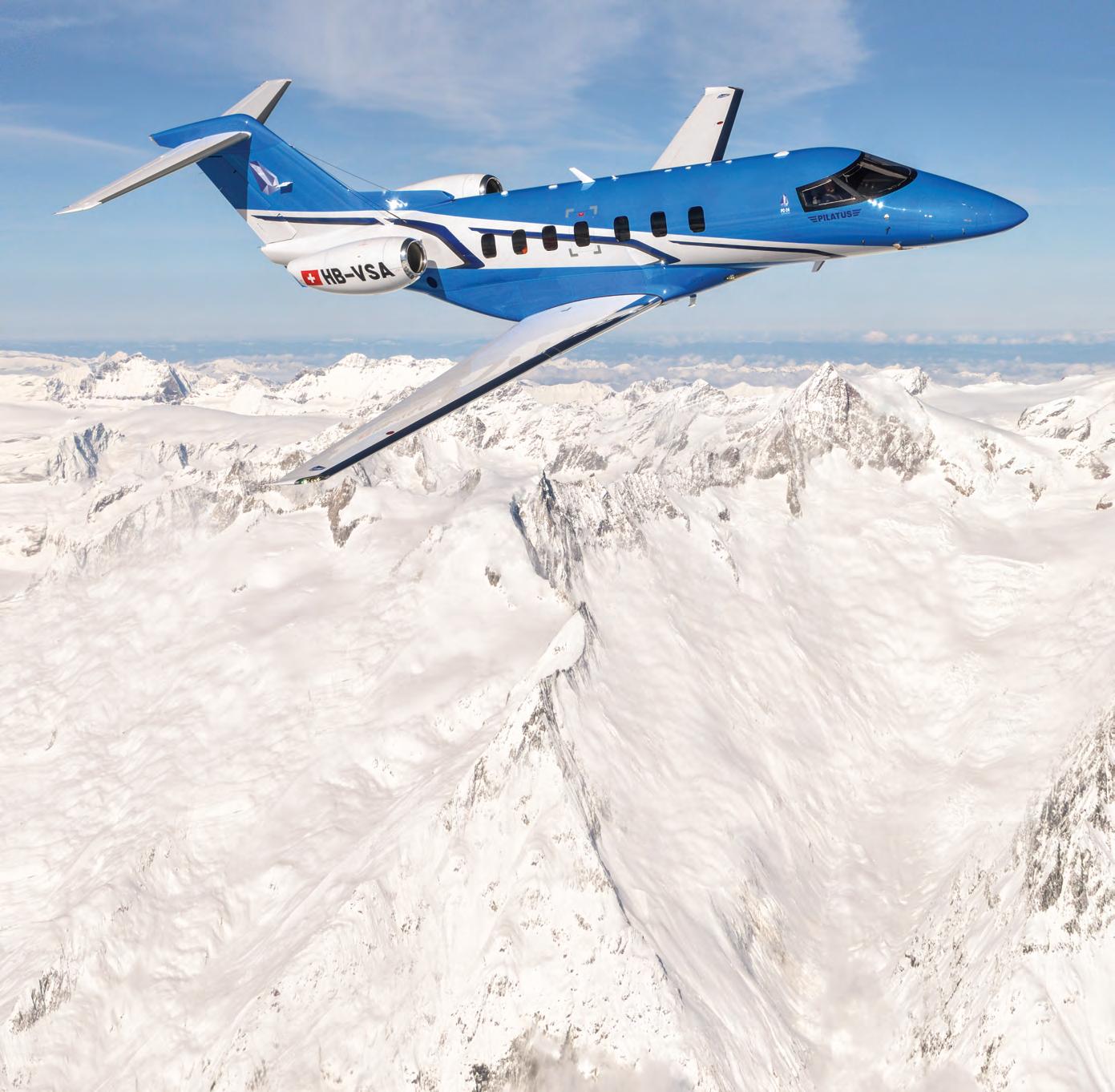

3.4%, while the higher-end pressurized subset fared slightly better, with its 109 deliveries representing a 2.7% fall off from last year.
Epic Aircraft nearly doubled the number of its single-engine E1000GX, with its 11 deliveries equating to a better-than-83% rise YOY.
Daher boosted its output of TBM 960s, adding six of the aircraft to its total from first-half 2023 against one fewer TBM 910. Textron had a nearly 17% improvement in deliveries in its King Air family, almost doubling the amount of King Air 360s handed over for the first half.
As it ramps up the deliveries of its new flagship M700 Fury, Piper Aircraft’s delivery total dipped from 22—including 18 M600s—in the first six months of 2023, to just 13 in the same period this year. While the number of M600s handed over in the first half of this year dropped to two, the OEM delivered its first seven M700s.
Normally very consistent in its delivery numbers, Pilatus was o ff by eight PC-12s YOY, a more than 20% decrease from its first-half 2023 total. Fellow European airframer Piaggio had no deliveries of its Avanti Evo turboprop twin in the first six months of either year.
The results also were mixed in the rotorcraft segment with the decline in overall shipments driven by a slide in turbine deliveries from 339 in the first half of 2023

Through the first half of 2024, we continue to see robust demand for new aircraft, as indicated by the impressive backlogs and plans for facility expansion by many of our OEMs...
to 313 this year. That drove down billings by $200 million in the first half, from $1.9 billion a year ago to $1.7 billion through the first six months of the year. However, piston helicopter deliveries ticked up by 2.7% to 115, marking an improvement of three. In all, rotorcraft OEMs handed over 428 helicopters in the first half.

Airbus Helicopters saw its deliveries dip by 19 units to 119 in the first half with H125 shipments o ff by 12 to 47 and H145 shipments dipping by four to 25. Airbus doubled its deliveries of the H160 medium-utility model to six, but also halved its shipments of its heavy-lift H225 to three.
Bell further reported a seven-unit drop in deliveries to 50, with a slight decline across all of its models, most notably handing over three fewer 429 light twins in the first half for a total of four. Leonardo also saw its deliveries dip by five units to 74 in the first six months of 2024. The Italian manufacturer handed over seven fewer of its light single-engine AW119 in the first half for a total of 26 and deliveries of its AW169 medium twin dropped by six units to 10.
Robinson deliveries, however, improved by nine units in the first half for a total of 170, largely thanks to the seven-unit increase in deliveries of its R66 single turbine to 69.
MD Helicopters delivered three aircraft in the first six months of 2023 but none this year, Guimbal shipments improved by one to seven, and Enstrom delivered two in the first half versus none at the same time last year. Sikorsky, conversely, delivered no helicopters this year versus a sole S-92 medium lift model last year, and Schweizer delivered one S300C this year compared with none last year.
“Through the first half of 2024, we continue to see robust demand for new aircraft, as indicated by the impressive backlogs and plans for facility expansion by many of our OEMs,” said GAMA president and CEO Pete Bunce. “Our constraints continue to be ongoing supply chain and workforce recapitalization issues, which are routinely compounded by unacceptable turn times in terms of responsiveness and lack of decisionmaking by the FAA specialists on such things as issue papers, certification plans, and regular correspondence.”
z

Experience comfort never before offered in this class of aircraft. Or the class above it.
BY MATT THURBER

Garmin’s GHD 2100 head-up display adds a new layer of safety to the Cessna Citation Longitude.
Aircraft manufacturers have a new choice for sourcing a head-up display (HUD) for their business jet flight decks, Garmin’s GHD 2100. Certified on Textron Aviation’s Garmin G5000-equipped Citation Longitude, the GHD 2100 is a fully capable HUD matched to an Elbit multi-sensor camera system and offering traditional HUD as well as enhanced, synthetic, and combined vision system imagery.
The HUD landscape has been dominated by Collins Aerospace, which bought Head-up Guidance Systems manufacturer Flight Dynamics in 1999 and manufactures HUDs for aircraft equipped with its avionics and for Gulfstream jets with Honeywell Epic-based flight decks.
Elbit also manufactures HUDs, and Dassault is the primary business aviation customer, having been first to market with a combined vision system (CVS) overlaying synthetic vision system (SVS) and infrared enhanced vision system (EVS) imagery on the HUD.
The GHD 2100 includes CVS as do some modern Collins systems installed on Bombardier and Gulfstream jets.
There is also the SkyLens wearable HUD developed by Elbit’s Universal Avionics subsidiary, and this has distinct advantages for aircraft where there is no space to install a fullsize HUD projector or for operators that want more functionality than a traditional HUD. While Honeywell made its own HUD many years ago, that product never took off, but the company recently purchased HUD assets from Saab and is now developing a new line.
HUDs, which have been a mainstay in military aircraft for decades, have grown in popularity in the business aviation market since Gulfstream pioneered installations in its large-cabin jets. It was first to offer EVS, in 2001, which eventually enabled enhanced flight vision systems (EFVS), and then was followed with SVS imagery on the HUD.
A business jet HUD allows pilots to view flight information on the combiner glass mounted in their forward view while also
enabling them to look through the combiner at the outside world and focus on everything except the glass in front of their face.
This eliminates the need to look down at a primary flight display (PFD) and then back up through the windshield, and HUDs are especially helpful during final approach, with EFVS enabling approaches to lower minima by helping pilots see runway lights earlier than with the naked eye.
On the GHD 2100, pilots can see conformal attitude and flight path information, navigation data, autopilot modes, and master warning/caution annunciations.
Garmin’s HUD is an option for the Longitude, available either standalone or as part of an EFVS when the Elbit camera is installed. Most buyers will likely select this option, which is priced at $668,700, and the take rate has thus far been about 25% of non-fleet Longitude buyers.
While designing the complex optical elements is a significant challenge, Garmin engineers were able to keep the HUD











































projector that mounts on the cockpit ceiling above the left-seat pilot relatively slim, so it doesn’t impinge on headroom.
The HUD’s field of view is 30 degrees horizontal by 24 degrees vertical. Like all HUDs, it does require careful positioning of the seat to keep the images on the combiner glass clearly in view. I didn’t find it difficult to set up for my viewing comfort.
The GHD 2100 was certified as part of the Longitude’s type certificate in 2023. Textron Aviation is seeking up to 50% visual advantage approval, allowing landings with lower visibility—cutting it from a half to one-quarter of a mile. With EFVS, the GHD 2100-equipped Longitude can already descend to 100 feet above touchdown-zone height.
Textron Aviation manager of flight operations Rip Lee flew the demo flight with me and, sadly, the weather didn’t cooperate; it was clear blue skies in Wichita, Kansas, so I wouldn’t get to experience the HUD in poor weather. Luckily, we were able to schedule some time in Textron Aviation’s Longitude iron bird engineering simulator, which precisely replicates the flight deck and control feel of the real airplane. The simulator would allow us to set some lousy weather so I could see how the HUD performed in adverse conditions.
Peter Fisher, senior engineering test pilot and the head of the HUD certification
program, walked me through the HUD demonstration in the engineering simulator. After taking off, I did some airwork including steep turns, then he had me climb steeply to see the arrows on the HUD pointing down and showing me which way to move to recover. I tried the same in a steep 80-degree turn to the left, and arrows pointing to the right popped up on the HUD.
With a precision approach dialed in, I hand flew to landing with weather set to one-quarter-mile visibility and using the Longtitude’s autothrottles. This was the first time I saw Garmin’s new lead-in line chevrons with their associated mile markers, a great improvement to the G3000/ G5000 avionics suite and viewable on the HUD or PFD.
Pilots can choose which mode to view on the HUD using a dual concentric knob mounted just to the right of where the combiner hinge is attached to the projector. Turning the small knob switches between EVS, SVS (Garmin calls it synthetic vision technology), and CVS. The large knob is used to adjust brightness. More options are available on the Garmin touchscreen controller’s PFD settings. One includes the ability to switch off SVS terrain so obstacles around the airport or in the foreground are still visible but distant terrain isn’t depicted. This offers a cleaner view, but I like seeing the terrain so I probably wouldn’t use this too often.

The CVS mode superimposes EVS and SVS, but there is a cutout that eliminates SVS on the runway and approach lights. I found that this helped me focus on where the approach lights should appear, and during the low-visibility approach, I could see the lights on EVS well before my eyes could see them without EVS. With this system, the HUD can detect LED lights that are becoming more widespread on runways, thanks to the multi-spectral sensors of the Elbit camera.
To help pilots through the landing, the HUD automatically declutters when approaching the runway, eliminating the horizontal situation indicator when gear and flaps are lowered, and it pops up flare cues (plus signs) to help the pilot achieve a smooth and accurate touchdown.
Fisher repositioned the simulator over Geneva, Switzerland, where I flew toward mountains until a TAWS alert told me to pull up. Flying an approach into Geneva, we couldn’t get vertical guidance to work but this just demonstrated one of the HUD’s benefits; I just put the flight path vector in the HUD over the aim point on the runway, resulting in a perfectly stable approach.
I’ve flown the Longitude twice before, so it was somewhat familiar. But this was the first time with the HUD. Sitting in the Longitude’s left seat, I didn’t find that the HUD projector impinged my headroom. In any








Airport security should go well beyond the passenger screening for commercial flights. Keeping controlled-access places secure within a facility depends on general and business aviation travelers and operators, as well. Know your security procedures – and those of the airport – and make sure everyone follows them. You and your crew will help keep these busy, important centers of commerce and travel thriving safely.
Guard against weak links in your security chain. Mount the poster where it can serve as a visual reminder to keep access points and aircraft secured. Need more? Download free copies at usaig.com.
Find out more about our coverage, our Performance Vector safety initiative or Performance Vector PLUS good-experience returns program. Contact us and we’ll connect you with an aviation insurance broker in your area.


John Brogan President and CEO, USAIG

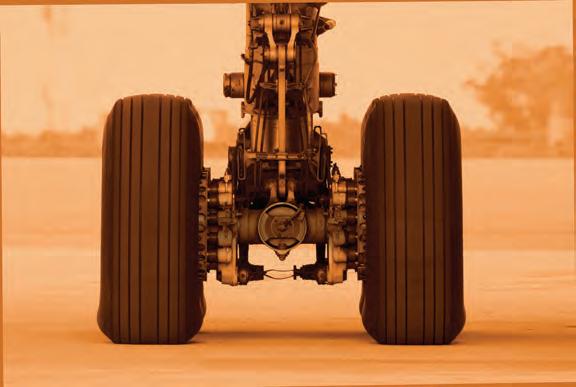

































































SECURITY DEPENDS ON YOU


















































Crucial centers of business and movement, airports require everyone’s vigilance to keep travelers safe and property secure. Security protocols and perimeters are only as strong as their weakest element. Play your role to help lessen risks when in controlled-access environments.
Double-check to ensure unattended access points are secure. Leaving one open once is a risky mistake; doing it habitually creates a huge vulnerability.
Respectfully engage unrecognized people in controlled areas to verify credentials.
Ask yourself if something is out of place. Then, 1) what is it, 2) who else needs to know, and 3) have you told them?
Lock and fully secure aircraft when unattended.


































































































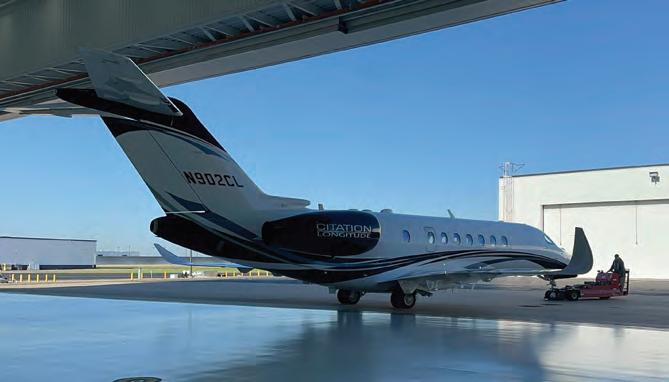
case, it is mounted behind where the pilot’s head should be once the seat is adjusted.
Spotting a HUD-equipped (EFVS) Longitude is easy: just look for the camera mounted on the upper nose. It is carefully positioned to line up with where the leftseat pilot is looking to eliminate parallax. The GHD 2100 is fully conformal, which means that what you see in the combiner glass accurately matches the outside world.
With Rip Lee in the right seat and Textron Aviation chief pilot Shane Reese in the cabin, I used the Longitude’s tiller steering to taxi to Eisenhower National’s Runway 19L, maintaining the proper taxi pace by referring to the groundspeed displayed on the HUD. After pushing the go-around button to set the flight director for takeoff, I taxied onto the runway and advanced the throttles until the autothrottle system took over. Once in the air, I set the nose attitude to match the pitch box in the HUD and climbed to 12,500 feet for some airwork.
After getting used to the feel of the Longitude again, I flew some steep 180-degree turns, which are even easier with the HUD; just put the flight path vector on the zeropitch line, far simpler when looking through the HUD and windshield compared to having to look down at the PFD.
I then slowed down for some low-speed maneuvering. In clean configuration, I slowed straight ahead, then in a left bank, followed by straight ahead with landing

gear and flaps in landing configuration. Each time, I watched the Garmin autopilot engage the autothrottles, advancing power and lowering the angle of attack to prevent a stall. I was using the HUD almost the whole time and rarely let my eyes range over the flight and multifunction displays.
We dialed in the RNAV (GPS) 13 approach at Hutchinson Regional Airport where I hand-flew, following the guidance on the HUD with CVS on, all the way to touchdown using the flare cue. The landing was smooth but we did touch down left of the centerline, which may have been due to watching the HUD imagery and not looking through the HUD at the actual runway.
After taking off, I kept the Longitude low and turned left toward some tall towers so I could see what they looked like in the HUD’s CVS. The synthetic vision system painted them clearly so they were easy to spot.
For the second landing at Hutchinson, Lee input the visual approach to the runway. This time I tapped the CLR button on the yoke to remove the SVS and EVS imagery from the HUD so it just had the flight information. With the flight path vector on the aiming point, the Longitude descended steadily to the runway and another smooth landing using the flare cue.
For our final approach to Hutchinson, I headed north after takeoff and then lined up for the Runway 22 approach, using the GPS overlay with lateral and
vertical guidance instead of the plain VOR approach. I wanted to try an autopilot go-around, so I let the autopilot fly the approach. With landing gear and flaps down, at about 300 feet, I pushed the go-around button on the power lever, and the autopilot disengaged while the autothrottles advanced the power. I followed the flight director guidance on the HUD as Lee retracted the landing gear and flaps and then set flight-level change and heading modes on the guidance panel.
Returning to Wichita, we were lined up for a right base to Runway 19L so we set up a visual approach and selected approach mode, which provided lateral and vertical guidance. I was flying a little nose-high on short final, but the flight director guidance was spot on as I matched the flight path vector on the flight director donut by pushing the nose down, and then it was time to follow the flare cue for a landing that was almost right on the centerline.
So far, Textron Aviation hasn’t announced other jets that might be equipped with the GHD 2100 HUD. Garmin is offering it to other aircraft manufacturers as well, and the HUD can be integrated with non-Garmin avionics.
Slowly but surely, Garmin has paved its way into larger aircraft with sophisticated integrated avionics systems, and the addition of a capable and relatively space-saving HUD is a significant accomplishment. z
There are a lot of sports metaphors used to inspire our best performances, but the one I like most when it comes to fighting is from the Greatest himself:
“The fight is won or lost far away from witnesses—behind the lines, in the gym, and out there on the road, long before I dance under those lights.”—Muhammad Ali
In August, I wrote in this space: “Nobody has ever won a fistfight with the autoflight.” It might be that this piece should have come first—a discussion of how crews, both veterans and novices, can prevent an undesired aircraft state, a sort of fistfight for pilots. If you’re going to avoid going down in this kind of fight, just like the Greatest suggests, you better put in the work in advance.
When we organized the (book) Automation Airmanship: Nine Principles for Operating Glass Cockpit Aircraft , we decided that our focus would not be on the mistakes that crews had made in the last 30 years and the accidents that have resulted. Instead, we turned the spotlight on what the very best crews in the profession do to avoid these large system failures at all.
We wanted to share our insight into what makes up a kind of superpower that some pilots demonstrate: a special “knowledge reserve” that makes a few pilots perform consistently better when given the same set of in-flight conditions as their peers.
While engaged with organizations of all types and sizes, military and civil, fixedwing and rotary, we kept seeing this quality on display at about the same rate, no matter where in the world we were being employed to devise robust flight protocols for the cockpits of new fleets.

BY CHRIS LUTAT MANAGING PARTNER, CONVERGENT PERFORMANCE
There was—always—one or more pilots (usually at least two in any given flight department) that could explain the systems better and more thoroughly and operate with more relative ease during flight operations, regardless of the fact that they had nearly the same training and experience with the new technology as their peers.
In the end, we fit all of the qualities of this small group into the last of our Nine Principles: Logic Knowledge . It was the definitive “missing piece” in distinguishing “good” from “great” when evaluating individual pilots. It continues to be so today and might even play an even more important role as aircraft become even more reliant on digital control systems and software.
It explains how crews operating the same make and model of aircraft in similar flight conditions can experience the same system casualty and have completely opposite outcomes—one tragic, and the other so routine it barely meets reporting criteria. (We talk about this in Automation Airmanship by describing what the crews of two other nearly identical aircraft did to overcome an almost identical system failure as the ill-fated crew of Air France 447 in June of 2009, just months apart in that same year.)
Better performing crews on the advanced flight deck are those who know that they are part of what engineers and analysts have named a “tightly-coupled” system. They take every opportunity to know all they can about the technology and other forces that they control to minimize the likelihood that, when forces align in just the right way, they won’t be the source of failure. (Tight coupling is a mechanical term meaning there is no slack or buffer or give between two items. What happens in one directly a ff ects what happens in the other.)
These individuals go beyond what their training has required of them, by forming detailed mental models of how aircraft systems work and interact based on their deep knowledge of the systems themselves. (I think the reason why there are normally at least two pilots in any organization that demonstrate this extra quality is that when someone discovers an insight into how a system works, part of their learning is to explain it to others as simply as they can, and this usually takes at least two people.)
In Working Minds: A Practitioner’s Guide to Cognitive Task Analysis , one prominent group of human factors researchers describes in the clearest terms what the most modern aircraft cockpits demand of each pilot:
“Flight management systems require pilots to engage in sensemaking to fit the FMS analysis with the instrument data. Pilots depend heavily on their mental models of the logic driving the FMS.”
This is not news to most pilots—even if training organizations spend increasingly less time on explaining and demonstrating system logic than they do on the

performance of rote procedures that bring out of the technology the desired flight path control for the respective phase of flight that the crew and aircraft are in at the time.
It leaves a performance gap that is present in nearly every flight department— between what the very best are doing and what everyone else accepts as good enough.
But knowing just a few of these skills could enable every pilot to perform at an elite level. Our challenge was to extract as much of the visible evidence of this skill from our observations as we could and explain it in clear and certain terms that every pilot could understand so that they could each reach the next level of personal airmanship.
Here are some of the things these pilots know beyond what they learned in transition training:
1. The basic laws and phase of flight logic their aircraft is designed around;
2. Altitude level-off logic (during climb, cruise, descent, approach, and go-around);
3. Descent logic (from cruise to alert— or decision height or altitude);
4. Autopilot and autothrottle connect and disconnect logic;
5. The indirect mode-change logic that results from delegating tasks to the automation;
6. Operator authority limits that are intended to maintain the aircraft flight path within design maneuvering limits;
7. Feedback mechanisms (color changes, word changes, etc.) that display mode states.
There are more, but pilots who are determined to bring their knowledge to the next level can start here to have the most immediate impact on their personal performance.
Here is a personal case study . On a recent flight leg from the U.S. to a busy Asian destination, my crew and I were in our initial descent as cleared by the

controller—still in RVSM airspace—with a crossing restriction ahead issued by ATC that we had just programmed into the FMS. The flight guidance was coupled to the autopilot and the autothrottles were on, per SOP.
We were arriving in the terminal area at the end of an eight-hour leg, at the airport’s peak arrival period; the controller was doing an excellent job of managing her workload, and we were in compliance with our clearance. After an “expedite descent” instruction from ATC, our TCAS display showed proximate traffic ahead and to our right, converging and also descending, probably heading for the same waypoint we had in our FMS.
In this complex, fast-moving, and tightly coupled system, we each knew without saying it that whatever we did was going to factor in the outcome the controller was seeking—to deconflict traffic while keeping the arrivals in sequence and above all avoid a loss of separation. Seconds after we had increased our descent to around 4,000 feet per minute by extending full speed
brakes, with an altitude capture mode indication on our FMA (due to our high rate of descent), we were issued an immediate level-off by ATC, at an altitude 2,000 feet above the FMS target.
Unable to communicate with the converging traffic to revise their clearance, the controller did the next best thing and issued an urgent instruction to an aircraft she was in communication with (us). Our challenge was to execute an immediate level-off that was in conflict with the commanded flight mode (from the previously programmed constraint, already in capture mode) and do it within the next few seconds. I was flying—so I can say exactly what the pilot flying was thinking: “Here’s a conflict between the commanded flight guidance and our clearance, and the risk to the ATC system is real. The best solution is the smooth disconnection of the autoflight and autothrottle, retraction of the speed brakes, followed by an immediate manually flown level-off from a high rate of descent, then a reconfiguration of the FMS and flight guidance to comply with the new clearance, and
ultimately, reconnection of the autopilot and autothrottle.”
It all went off like clockwork, but the mental representation of what the aircraft autoflight was commanding versus what we wanted and needed was the key to a smooth transition to another flight mode without compromising aircraft or ATC limits. The system worked as planned, and our aircraft passed safely over the conflict aircraft without so much as a TCAS alert.
ATC thanked us for our assistance and switched us to the next sector as though it was all in a day’s work. Which it was, right? In our debrief just before deplaning, each member of my crew shared their perceptions of the situation and their takeaways, which when taken together demonstrate just how many systems were interacting together, and how important it is to know the logic of the systems we control so that we could play our part.
In short, we avoided a fistfight with the autoflight because we knew how it was configured (the airplane’s systems), how that was in opposition to what the bigger system required (the airspace system), and exactly the steps that were required to resolve the conflict.
The safety industry continues to find new ways to prove that the human remains the “weakest link” in the complex, tightly coupled system we all work in. It’s up to us as individuals to take every possible step to reduce the likelihood that we will be the source of failure on any given day when, unexpected and unwarned, forces align to challenge the limits of the tightly coupled system we live in and the knowledge that it depends on. z
Chris Lutat is managing partner of Convergent Performance, a B777 captain, and co-author of “Automation Airmanship: Nine Principles for Operating Glass Cockpit Aircraft.”
The opinions expressed in this column are those of the author and not necessarily endorsed by AIN Media Group.

BY MATT THURBER
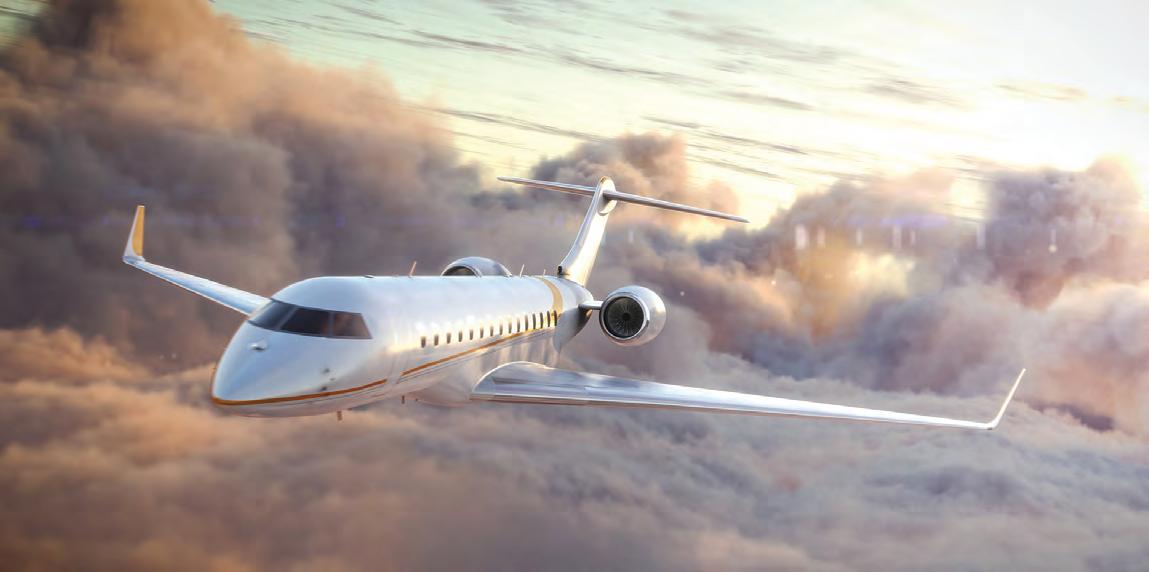
AIN overall average reader ratings for turbofan engine product support during the past year climbed for three engine manufacturers, with GE Aerospace topping the chart at a 9.1 rating, up the most—by 0.4—from last year. Rolls-Royce’s 8.6 rating remained the same as last year, putting it in second place, while Williams International, with a rating of 8.5, climbed 0.1 and came in third. Pratt & Whitney Canada (P&WC) declined by 0.1 to 8.3, while Honeywell saw the second-largest gain of 0.3 to a 7.9 rating. In the turboprop category, Honeywell topped the chart with a 9.1 overall average, followed by P&WC, which climbed 0.3 points to an also very strong 8.9. Pratt & Whitney’s overall average dropped to 8.6 from 9.1 for turboshaft engines. RollsRoyce and Safran weren’t included because they received insufficient ratings.
As for the individual engine ratings, most of the turbofan models saw increases in support scores even as it was more of a mixed bag on the turboshaft front. GE Aerospace’s Passport and CF34 turbofans came in with 9.2 and 9.0 overall averages this year, leading the pack. Honeywell’s TPE331 led in the turboprop/turboshaft category with its 9.1 rating.
Overall engine reliability generally drew the strongest ratings with nearly all scores edging above 9.0, while predictably, cost of parts was among the lower scores for both the company and individual models.
Supply chain has continued to plague some of the engine manufacturers, with conflicts including that involving Russia and Ukraine vexing areas such as access to titanium. However, in parts availability, some manufacturers have had more
success than others—reflected in the range of scores from 7.4 to 9.1.
That spread was even greater for individual models, reaching 9.2 for GE’s Passport, a relatively new model that is still expanding in the marketplace, and 6.9 for the venerable Honeywell TFE731, a more legacy model that has been in production since the early 1970s with more than 13,000 produced.
Despite the challenges of supply—in material, parts, and labor—the high scores for engine reliability across the board are particularly notable in light of the uptick in flying over the past several years. While first-half activity is generally down in North America and Europe, it has been up in other parts of the world and largely still surpasses 2019 activity, according to analysts such as WingX and Argus.
The FJ33 and FJ44 family of engines won’t let you down. Our Total Assurance Program (TAP Blue) covers all engine maintenance for a fixed cost per flight hour, scheduled and unscheduled, including all service bulletins plus whatever nature throws at you. TAP Blue is the only engine maintenance program that covers foreign object damage (FOD) including bird strikes and lightning strikes. Simple, predictable, and affordable – you can rely on TAP Blue.

To sign up now for the highest levels of maintenance coverage ever o ered, contact us at www.williams-int.com, by e-mail at WIproductsupport@williams-int.com, or by phone at 1-800-859-3544 (continental US) / 1-248-960-2929 (other).
AIN ’s annual Product Support Survey aims to quantify and rate through statistical analysis the product support functions of business aviation manufacturers over the past year. The survey, whose respondents include operators of business jets, pressurized turboprops, and turbine-powered helicopters, endeavors to encourage continuous improvement in airframe, engine, and avionics product support throughout the industry.
For the third year, AIN conducted the survey via a questionnaire developed in partnership with Rolland Vincent Associates, a Texas-based consultancy focused on aviation market research, strategy, and forecasting. Designed to provide improved ease of use and to encourage more participants to complete the entire questionnaire, the survey tool included Spanish and Portuguese versions along with clearer language and imagery around the categories and evaluation scale. Finally, it asked respondents to evaluate one full aircraft at
a time, including airframe, engines, and avionics.
AIN emailed qualified readers a link to the password-protected survey website active from late April to mid-June. It asked respondents to rate individual aircraft and provide the tail number, aircraft age, and primary region of service. The survey also asked respondents to rate, on a scale from 1 to 10, the quality of service they received during the previous 12 months in the following engine categories: Factory-owned Service Centers; Authorized Service Centers; Cost Per Hour Program; Parts Availability; Cost of Parts; AOG Response; Warranty Fulfillment; Technical Manuals; Technical Reps; and Overall Engine Reliability.
In total, 679 unique respondents, representing 2,221 aircraft, from 62 countries completed the survey. While above last year’s total, AIN did not receive enough responses to verifiably report on all manufacturers in all categories and on
several engine models. Rolland Vincent Associates reviewed the data to ensure accurate and valid responses. It also compiled the final survey results in close coordination with AIN
AIN’s analysis of the survey showed that scores slightly improved this year despite several challenges faced by product support organizations:
» Flight hours remained elevated between the May 2023 to May 2024 survey period and flying exceeded pre-pandemic levels in all business aviation segments. More flying leads to more unscheduled maintenance and demand on support teams.
» Supply chain disruptions created longer lead times for parts acquisition but these are finally showing signs of easing.
AIN’s 2024 Product Support Survey will be conducted from late April to mid-June next year. Recognition of personnel who went Above & Beyond on behalf of their customers follow this article.
GE Aerospace’s Passport and CF34 engines rocketed to the top of the ratings for individual engine models with a 9.2 and 9.0, respectively. Neither drew enough ratings to be included in the 2023 survey results. For the Passport, which powers the ultra-long-range Bombardier Global 7500, ratings topped 9.0 in all categories except cost-per-hour programs and cost of parts. Even in the latter category, the Passport led the panel with an 8.8 rating. It also led in areas including AOG response with a 9.5.
The company’s overall engine reliability—crossing all its rated engines—scored a high 9.5, matching that of Rolls-Royce. GE also received high scores for factory-owned service centers (9.4), authorized service centers (9.2), cost-per-hour programs (8.6), parts availability (a relatively high score of 9.1), cost of parts (a surprisingly high 8.6 for this category), AOG response (9.3), technical manuals (8.9), and technical reps (9.2).

Operators flying aircraft powered by GE Aerospace engines continue to fly more after the Covid pandemic, and this has spurred growth of GE Aerospace business jet MRO activity through its OnPoint product support program.
Since 2023, the fleet of aircraft powered by GE engines grew by 10%. Just in business aviation, GE’s CF34-3 engine fleet recently climbed over the 15-million-hour mark. The GE Passport has surpassed 300,000 flight hours.
The full-service OnPoint risk-reduction program for business aviation continues to focus on the “four essential elements,” according to GE: “comprehensive, transparent, transferable, and global.” Supporting customers through OnPoint means investing in growth globally, improving spare parts availability, and providing prognostic information via GE’s digital data analytics. This includes adding logistics personnel and emphasizing strategic global spare parts warehouses to improve the processing and delivery of parts.
“The result has been a 20% year-over-year growth in the volume of mobile repair jobs supported and a 10% increase in proactive analytics developed to minimize operator disruptions with over 68% of Passport disruptions caught prior [to] occurrence,” GE explained.
“The OnPoint program balances our OEM design expertise and the use of genuine parts and repairs to give our customers superior operational reliability and peace of mind,” said Melvyn Heard, general manager of business aviation at GE Aerospace. “This streamlined support means no time wasted so you have less downtime and more time in the air.”
Rolls-Royce maintained its overall average score of 8.6, as well as its position of second of five turbofan providers listed in the survey, similar to 2023. The company’s highest rating in the survey was for overall engine reliability at 9.5, matching that of GE Aerospace. The engine maker also scored a strong 9.0 in factory-owned service centers and
8.8 in authorized service centers, along with 8.9 in warranty fulfillment.
While its Tay series did not garner enough responses to be included in this year’s survey, its BR700 series improved in ratings from the top-ranked 8.6 last year to 8.8 this year and led the pack in overall engine reliability at 9.6. However,
its AE3007 saw a notable dip in the ratings from 8.6 in 2023 to 7.9 this year with drops below 7 in the cost-per-hour programs and cost-of-parts categories.
Rolls-Royce’s Business Aviation Aircraft Availability Center has helped the engine manufacturer achieve a return to service for AOGs of fewer than 24 hours and a more than 99% averted missed trip rate for customers all over the world.
During the past year, Rolls-Royce has added to its authorized service center network, which now has more than 85 locations. These are supported by 10 parts depots, including the newest, a 10,000-sq-ft AOG support storage facility in New York for CorporateCare customers based on the East Coast.
More than 50% of CorporateCare-covered engines are now on CorporateCare Enhanced, which includes “full coverage of both the engine and nacelle plus all labor and mobile response team travel time,” according to Rolls-Royce, as well as covering “unlimited corrosion and erosion.”
To help owners of “mature Rolls-Royce-powered business aviation aircraft,” the company introduced CorporateCare Flex, a power-as-a-service program that lowers the cost of ownership while helping increase aircraft availability.
Other developments include Rolls-Royce’s new technical publications platform; strengthening engine and nacelle lease assets with more than 250 on hand; and 25 customer managers and more than 75 on-wing services technicians dedicated to business aviation. This year, Rolls-Royce is
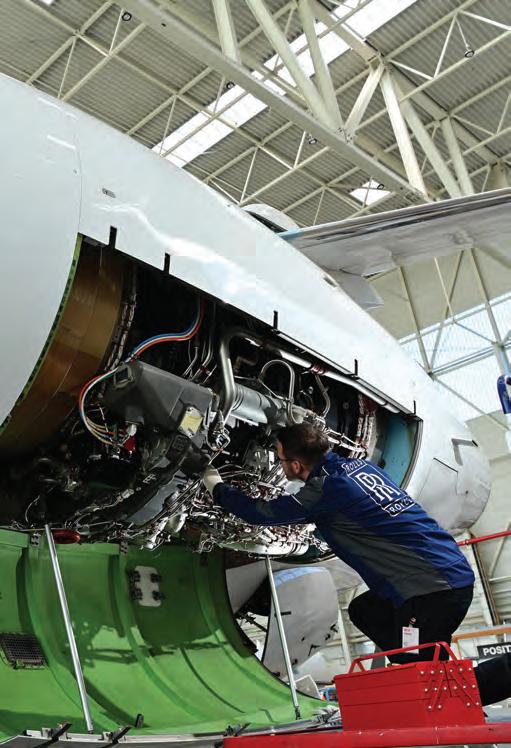
launching a new customer portal “where you will find everything you need to manage your Rolls-Royce assets in one convenient location.”
Williams International’s score inched up a tenth of a point to 8.5 this year, placing it in the middle of the overall average ratings for turbofan providers and just below Rolls-Royce. The company received the highest rating for warranty fulfillment at 9.7, also the highest rating of any category for any of the turbofan providers.
Its FJ44 engine drew an 8.5, pushing above 9.0 in warranty fulfillment, authorized service centers, and technical representatives.
During the past year, Williams International said it “worked to identify areas of improvement to minimize turnaround time in our repair station and expedite the engine delivery process.”
Since 2020, Williams has faced challenges with downtime and rental engine availability, but the work to improve these areas has resulted in customers experiencing greater aircraft availability and an increase in



the number of available rental engines. Customers in the Williams TAP Blue service program were able to receive expedited maintenance, the company explained, so no loaner engine was needed, thus eliminating having to make a return trip to the service center for a loaner engine exchange.
Another important e ff ort has been upgrading the Williams service network to full capabilities approval. “We understand the need for our service centers to be fully equipped to support operators’ maintenance needs,” the company noted, and the added capabilities at authorized service centers have helped prevent engine removals and also sped up the work because there was no need to wait for dispatch of trained technicians. Plans call for all authorized service centers to have the enhanced capabilities “in the near future,” but 70% have already reached that level.

“We are passionate about supporting our customers and believe in providing the best products and services available,” the company said.
Pratt & Whitney Canada’s (P&WC) turbofan support rating dipped slightly to 8.3 this year, but the engine maker drew a strong 9.0 in authorized service centers and 9.2 in engine reliability. At the same time, in the turboprop segment, P&WC’s rating improved by 0.3 to 8.9 with scores topping 9.0 in six categories: factory-owned service centers, authorized service centers, AOG response, technical manuals, technical representatives, and overall engine reliability. As for its turboshaft position, P&WC experienced a 0.5 drop to 8.6 but still scored 9.0s in both service center categories and 9.2 in engine reliability.
The company’s PT6A turboprop received a rating of 8.9, with the turboshaft variants close behind at 8.8.
In the fourth quarter of last year, P&WC announced the selection of Duncan Aviation’s Lincoln, Nebraska MRO headquarters as a designated overhaul facility for PW300 and PW500 turbofan engines that enter into service in the subsequent two years.
The move bolsters P&WC’s global network, which consists of more than 50 company-owned MRO facilities, designated maintenance facilities for line maintenance
and mobile services, designated overhaul facilities, and APU-approved repair facilities located in 25 countries. With more than 600 PT6C-67C engines operating in the Asia-Pacific region, P&WC in February revealed plans
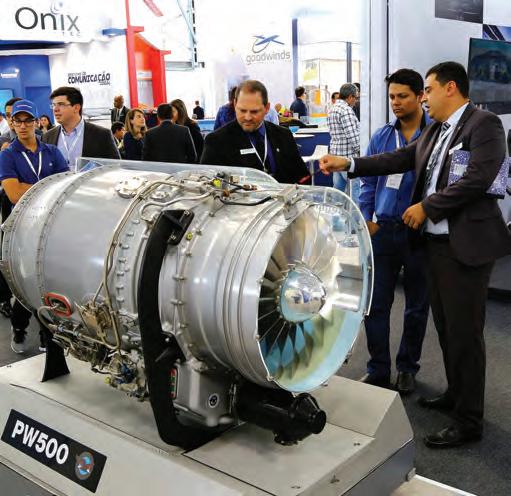
to expand MRO capabilities in Singapore with a new overhaul line. Demand for “advanced maintenance solutions” in that region led to the decision to add the overhaul line, which will include a new modular test cell, according to P&WC. The PT6C-67C powers the Leonardo AW139 medium-twin helicopter, and the new overhaul line and test cell will be fully operational by 2025.
“Maintaining close customer relationships is crucial for planning our customers’ maintenance, repair, and overhaul needs,” said Irene Makris, v-p of customer service at Pratt & Whitney Canada. “With increased flying across all our markets, we continue to work on finding solutions through pioneering repair part
strategies and new provisioning to keep fleets flying.” Supply chain continues to challenge manufacturers throughout the industry, she added, as well as longer turnaround times. This makes it critical to keep communication channels open and make sure front-line teams have all the tools and training that the y need. “It’s also important not to lose sight of the future. Leveraging our engine health monitoring data, automation, and AI delivers proactive solutions. Additionally, efforts are underway to inspire the next generation of maintenance technicians amidst increased service demand, as the industry evolves and innovates,” she concluded.
Honeywell marked a 0.3 improvement in its rating from 2023, reaching 7.9 in turbofans, while maintaining a top rank among turboprop/shaft engines of 9.1 for its TPE331. In the turbofan segment, it received a 9.0 score for authorized service centers and a 9.1 in engine reliability. However, lower scores in cost of parts (6.7) and parts availability (7.4) tamped down overall scores in the turbofan sector.
Meanwhile, in the turboprop segment, warranty fulfillment drew a high of all the scores in this year’s survey—and last year’s, for that matter—with a perfect 10.0 followed closely by a nearly perfect 9.9 in engine reliability.
Like other engine OEMs, Honeywell customers have faced issues obtaining rental engines, so some reorganization has taken place to improve bank engine health, according to Todd Owens, v-p of customer and product support for the Americas. “The engine rental bank team, as well as the specs teams, used to report into a different part of customer product support,” he said. “We made a strategic decision to have those teams…report directly to me so that my team can better prioritize and take back the voice of the customer. The demand for bank engines is only going to increase,” and this applies to the HTF and TFE series engines.
Although the last new TFE731 shipped earlier this year, there are still more than 10,500 TFEs in the field, and supporting them remains a priority. There have been supply chain issues for TFE parts, but Owens and his supply chain vice president are working with channel partners and the Honeywell Aerospace Trading team to source serviceable used parts that can be repaired to keep the engine fleet flying.
“We’re going out and purchasing engines to make sure that the TFE bank health is where it needs to be,” he said. “We have a weekly [meeting] with myself and my peers and the supply chain to make sure that we’re getting the details needed, or we’re dual sourcing those parts, to make sure that we get the customers’ engines out of our shop back and on their airplanes.” This also releases engines back into the rental bank. “We’re making a lot of progress there,” he said.
As the HTF fleet has matured, these are seeing more services affecting the core of the engine. A recent fix for the stator will be incorporated during HTF core access, via a new service bulletin, according to Malcolm Fleming, v-p of global technical operations. Another improvement is availability
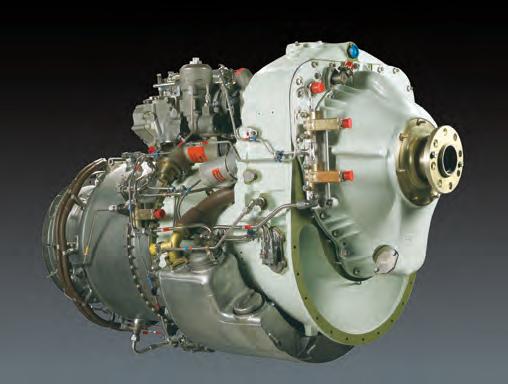
soon of a device for wireless downloading to improve monitoring of engine data, identify emerging trends, “or identify removals that need to happen proactively,” he said.
Honeywell has bolstered its AOG team with six new agents who will help provide faster service. Additionally, said Fleming, “We’re looking at how we use digital transformation and generative AI to identify multiple locations or where parts could be available and what’s the fastest way to get the part to the operator. And then providing the operator some options on how they can get the part…to help accommodate potential import-export timeframes, but also looking more holistically where the hardware is available, and giving them options.”
Last year, Honeywell refreshed its technical publications portal, and this will enable a key step, adding interactive electronic technical manuals. These are set to go live on the portal at the end of the year. “We’re also heavily focused on getting the TFE manuals updated and revised to the latest standards,” Fleming said, and this will be followed by AS907 manuals.
“There are still many challenges in our supply chain,” Owens said, and although trends are positive, “we’re not where we want to be. We continue to invest and are looking for opportunities to add additional repair capability.” One big improvement is the development of repair capabilities for TFE ITT harnesses, speeding up engine turn times. “We’re working with our engineering team to develop repair capabilities,” he said. “We’re turning over every rock to try to improve our mechanical throughput, and we invest heavily there. We know we still have a long way to go, but we’re doing everything we can do to improve the mechanical side of our supply chain.” z












AIN Media Group is excited to announce our inaugural









March 27, 2025 | The National WWII Museum | New Orleans, LA

Join us for AIN’s FBO Dinner & Awards Gala, a prestigious event dedicated to celebrating excellence in the business aviation industry, as we announce the top performers from our survey.
The event will take place on Thursday, March 27th, 2025, from 6 pm to 9 pm in the U.S. Freedom Pavilion at The National WWII Museum in New Orleans. This exclusive evening will feature a formal dinner and an awards ceremony.
This event promises to be an unforgettable night of networking, recognition, and celebration among the leaders in aviation.
During AIN’s annual product support survey for aircraft, avionics, and engines, customers highlighted individuals who go above and beyond their call of duty. Below are many of those named and the praise they received.

RANDY ADAMS (TEXTRON AVIATION)
“Randy is willing to answer calls 24/7, immediately works to address AOG and fleet issues. Continues to provide updates and then follows up after the event to identify the action items needed to prevent the AOG in the future.”
GRAHAM ALLAN (LEONARDO HELICOPTERS)
“Very hard working and dedicated.”
TAREK AMIN (PRATT & WHITNEY CANADA)
“Exceptional attention to customer matters. Makes you feel like you are P&WC’s only customer. Amazing support.”
SHAUN APPELL (LEVAERO AVIATION)
“Shaun’s customer-first approach ensures that people are satisfied with their maintenance experience.”
ETHAN AU (BOMBARDIER)
“Always responsive, responsible, and delivers the services…Informative advice and timely response to the operators’ needs.”
CHRISTOPHER BARNES (SMARTSKY)
“After contacting him late on Saturday, he changed his schedule to arrive on a Sunday morning to test the system prior to our departure. He went way above and beyond normal customer support.”
STEPHANE BEAUCHAMP (BOMBARDIER)
“Demonstrates exceptional customer service, agility when it comes to solving problems. Provides high level of service.”
JANET BEAZLY (DUNCAN AVIATION)
“! anet is a great CPM. She’s always helpful, informative, and knowledgeable about my company’s aircraft.”

RICK BEST (TEXTRON AVIATION)
“When we call, he replies and if he can’t help us himself, he gets us in touch with those who can.
Rick is the best I have ever worked with. He’s aways quick to answer. Rick does an outstanding job of helping us resolve issues that we have.”
HANNES BESTER (BOMBARDIER)
“Always available and helpful.”
KEN BLAD (BOMBARDIER)
“Very knowledgeable and always helpful when we need support.”
MIKE BOWEN (BOMBARDIER)
“Exceptional service in every way. The best FSR I’ve used. He was quick to help with an issue when the aircraft was on the road. Mike was extremely helpful in expediting a [service request for product support action] so we could fly the aircraft to a service center. Mike will answer the phone any hour of any day.”
JON BRAIDICH (HONEYWELL)
“Incredibly knowledgeable and always prompt and helpful. We truly appreciate what he does for us.”
JOHAN BRUNO (DAHER)
“After an FBO caused hangar rash incident, !ohan organized a rapid AOG response, working with the Daher factory, Daher engineering, and a local mechanic to get me back flying as quickly as possible, but more importantly, making sure the repairs were executed correctly and safely.”

MARK BURNS (GULFSTREAM AEROSPACE)
“Mark has built the service center network as well as the Lincoln MRO to support the aircraft Fleet. No other OEM has accomplished what Mark has achieved!”
DAVID CAMPBELL (AVEX AVIATION)
“Best customer support. Customer service and availability are outstanding. Responsive, knowledgeable, makes sure it’s done right!”
DENIS CANTIN (BOMBARDIER)
“Great customer service. Utmost commitment to the client.”
ROMAN CARRETO (LEONARDO HELICOPTERS)
“Excellent support and attention.”
JOHN CARY (LEONARDO HELICOPTERS)
“Very hard working and dedicated. Always available to help us find solutions that keep us flying.”
TREVOR CASTLE (BOMBARDIER)
“Trevor has superior knowledge to troubleshoot and diagnose. If he doesn’t know the answer, he is quick to find it, day or night. Lucky to have him at my disposal.”
ROBERTO CESAR (GULFSTREAM AEROSPACE)
“Very proactive.”
NICOLAS CHABBERT (DAHER)
“Works tirelessly and enthusiastically to support and promote TBM and Kodiak aircraft.”
AGNIESZKA “AGGY” CHRANIUK (BOMBARDIER)
“Bringing the aircraft to a maintenance visit involves a lot of planning, travel, accommodation, airport badges, etc. and she takes care of these things, so I can and have time to focus on technical issues. This is often overlooked but really makes a difference.”
MATTHEW COLBORNE (BOMBARDIER)
“Unwavering dedication, exceptional work ethic, and proactive approach to customer service. Continually demonstrates a positive attitude and a collaborative spirit, inspiring those around them. Outstanding efforts have not only ensured the smooth execution of tasks but have also set a high standard for excellence.”
STEVE COMMODORE (BOMBARDIER)
“Glad to have as my Customer Care FSR. Does an excellent job of supporting my aircraft and me. Quick to respond and help me get the aircraft fixed in a timely fashion.”
RONNIE COOK (BOMBARDIER)
“A leader in the FSR field, Does an excellent job of supporting my aircraft and me. Quick to respond and help me get the aircraft fixed in a timely fashion.”
ROBERT CORRY (PRATT & WHITNEY CANADA)
“Always available and responsive.”
BRIAN COTTON (BOMBARDIER)
“Always available and very knowledgeable.”
ANTHONY COX (BOMBARDIER)
“Listens and finds solutions. Anthony has always tried to do right by the customer–sometimes exploring exotic solutions. Understands support needs worldwide.”
MARIO CRUZ (EMBRAER)
“Mario is always available, whenever we need, to understand and solve every single demand we have, at any time. The field support is amazing! Mario Cruz is a really special guy; he created a synergy with pilots, services centers, and of course, with the technicians.”
MAURIZIO D’ANGELO (LEONARDO HELICOPTERS)
“Always available.”
RYAN DAGES (GE AEROSPACE)
“Ryan is responsive, professional, and always has time for his customers. Thank you, Ryan.”
RANDY DAVIS (TEXTRON AVIATION)
“Field service rep who will answer his phone any time day or night. He will stay on the problem until it is completely resolved! He does this even though he is no longer our field service rep!”
FRANCIS DE GRUCHY
(PRATT & WHITNEY CANADA)
“Exceptional attention to customer matters. Makes you feel like you are P&WC’s only customer. Amazing support.”
SCOTT DILLON (EAGLE CREEK AVIATION)
“Always ready to assist and outstanding knowledge of aircraft.”
MIGUEL DOSKOCZ (BOMBARDIER)
“Great knowledge and dedication.”
RAPHAELE DRUMMOND (BOMBARDIER)
“Best customer account manager out there. She truly cares about the customer and always does her very best to get issues addressed.”
MARCO ESPEJEL-ORTEGA (LEONARDO HELICOPTERS)
“Excellent professional. Easy going person, professional and dedicated.”
ANGELO FAVARO (LEONARDO MALAYSIA)
“Fully supports us.”
LUIS FERNANDO SAUCEDO MÁRQUEZ
(GULFSTREAM AEROSPACE)
“He knows the models very well, is polite and respectful.”
SAMSON FRANKLIN (HONEYWELL)
“Samson goes above and beyond every single day, both for his company and for his customer! Kudos!”
LUCIO GARCIA (BELL TEXTRON)
“Outstanding field support engineer.”
ERIC GARNEAU (GE AEROSPACE)
“Always available and very helpful, every time.”
NICHOLAS GERMANI (BOMBARDIER)
“Troubleshooting support and constant onsite visits this year have been well received and saved time and money with his support. Thank you.”
KRISTI GLASSMANN (GOGO BUSINESS AVIATION)
“Kristi did a great job organizing all levels of support in repairing a very challenging issue with our L5 installation. Top notch service!!”
PETER GRABHAM (JET DILIGENCE)
“Excellent support for our aircraft, always happy to assist and available day and night. Excellent AOG response with a wide network of people he can reach in a short period of time.”
CHRISTOPHER GRINNELL
(AERO STAR AVIATION)
“He knows the product. He responds right away. He cares about customer service…‘THE EXPERT’ for all things Phenom.”

QAIS HAMDAN (ROLLS-ROYCE)
“Always available and helpful.”
OSKAR HAUG (BOMBARDIER)
“Very dedicated person for many years.”
LEE HOGGARTH
(GULFSTREAM AEROSPACE)
“Lee has consistently demonstrated a remarkable commitment to providing exemplary service. His proactive approach, attention to detail,
and willingness to go above and beyond expectations have greatly contributed to the success of our operations. Lee’s expertise and professionalism have been invaluable in resolving challenges swiftly and e!ectively, ensuring minimal disruption to our operations.”
JOE HENSLEY (INTERCONTINENTAL JET SERVICES)
“Excellent in avionics upgrades and service response.”
TONY HULSEBUS (DASSAULT FALCON JET)
“Tony does an exceptional job. He is knowledgeable, friendly, and knows the company’s key people to get my aircraft up and running. He follows up to make sure that all ends well even after a solution is discovered.”
NICOLE JEFFORDS (CAVU AIRCRAFT MAINTENANCE AND AVIONICS)
“Above and beyond in service.”
BRET JONES (BOMBARDIER)
“Is always readily available for any questions and with assistance with a new plane.”
MARK JAMES (INTERCONTINENTAL JET SERVICE)
“Always accessible, bullet-proof reliable, excellent communicator, truly cares for his customers. Extremely knowledgeable and friendly to boot… Sets the example.”
NEIL JAMES (INTERCONTINENTAL JET SERVICE)
“Available 24/7 for troubleshooting and to solve problems with the plane.”

DAVID JENSEN (ACI JET)
“Great customer relations.”
IAN JONES (BOMBARDIER)
“Professional throughout—always available and supportive. Then, there’s a deep product knowledge, too.”
ASHOK KAPADIA (EMBRAER)
“The best tech rep ever! This guy deserves recognition for his support and assistance.”
VIGNESH KASIVISWANATHAN (EMBRAER)
“Excellent technical representative. He is always very active at any point of time for
technical and other matters. Always prompt with response, and extremely knowledgeable. He helps us in every aspect of our operations. Excellent and knowledgeable about the work.”
ALEC KINDRED (NORTHEAST AIR)
“Always goes above and beyond as far as maintenance on aircraft.”
KERRY KINEK (LEONARDO HELICOPTERS)
“Always going above and beyond.”
DEL KIRK (SIKORSKY)
“Above and beyond. Del provides our organization with the necessary parts to keep our aircraft with impeccable service and support.”
AARON KREISSLER (BOMBARDIER)
“Always going above to support and helps our mission with customer service support.”
JEAN-MICHEL LABORDE (DASSAULT AVIATION, FALCON COMMAND CENTER)
“Fast and very detailed precise replies in AOG situations, which also includes a lot of figures, diagrams.”
MARTINE LAPLUME (COLLINS AEROSPACE)
“Excellent support with Collins Venue installation and integration.”
ED LA SALA (DASSAULT FALCON JET)
“Ed has been very helpful when we need parts and is always there to take care of some of the issues on the back end. Very prompt in his responses, and I appreciate the attitude and humor he brings to his job. In short, Ed is able to make things happen for us and does it all while having a good time.”
MIKE LAVER (CAROLINA TURBINE SUPPORT)
“Goes above and beyond for support.”
JEFF LEISEY (DASSAULT)
“Any time day or night he is always ready to help.”
LARS LEMKE (BOMBARDIER BERLIN)
“Lars is always responsive to the customer and makes you feel like you are receiving his personal attention.”
JAMES LIANG (GULFSTREAM AEROSPACE)
“Very knowledgeable, always available, swift responses, always comes up with solution to solve your problem, and get you out of AOG.”
SARAH LINTERN (BOMBARDIER)
“Always quick responses.”
FERNANDO MACHADO (LEONARDO DO BRASIL)
“High knowledge and availability to solve customer problems.”
JULIANO MAIA (EMBRAER)
“!uliano has greatly supported us in terms of parts issues and is always available and with the sense of urgency we need.”


RAPHAEL MAITRE (DAHER)
“He is the most helpful and honest man l know in the industry.”
STEPHEN MARANDOLA (PRATT & WHITNEY CANADA)
“Exceptional attention to customer matters. Makes you feel like you are P&WC’s only customer. Amazing support.”
PETE MARKER (BOMBARDIER
DALLAS SERVICE CENTER)
“Very professional.”
MIGUEL MARTINEZ (BELL TEXTRON)
“Does his best to keep Bell customers satisfied.”
CHUCK MASSANOPOLI (SKYTECH)
“A 35-year veteran who is extremely well-versed and competent over multiple product lines and regs.”
JAVIER MATOS (LEONARDO HELICOPTERS)
“Second-to-none support for the ongoing operation. A large part of the success of our maintenance services is due to the quality and opportunity of support that he and his team provide in a personal and highly qualified manner.”
KRIS MCCANN (BOMBARDIER)
“Exceptional support and communication for required maintenance service events.”
MATTHEW MCCAULEY (BOMBARDIER)
“Wears many hats, does a great job. Excellent response to our tech needs. Very knowledgeable and always available. He is a dedicated, professional, and outstanding as a tech rep. Well done and thank you. He visits us and asks for our feedback. Always has good input for the various issues we have had.”
DUANE MCCORD (FRIEND AIRCARE)
“Duane has spent numerous hours on the phone with my maintenance personnel when
troubleshooting our aircraft air conditioning system, and with other smaller system.”
TIM MCDONNELL (BOMBARDIER)
“Demonstrates exceptional customer service, agility when it comes to solving problems. Provides high level of service when it comes to safety enhancement and operators’ requests for improvements.”
MARCO MELANÇON (BOMBARDIER)
“Awesome gentleman. Solves problems at no cost to us. He’s extremely knowledgeable and a man of character.”
FABIO MELLO (LEONARDO DO BRASIL)
“He is always available to resolve doubts and help.”
ALEX MIKASA (LEONARDO JAPAN)
“His friendly support and alignment with !apanese customer demand are appreciated.”
LESLIE MIKOLAJCZYK (BOMBARDIER)
“Service is above expectation. Best customer service, always available! Leslie is in constant contact with us to provide us with emerging information and assisting us in diagnosing problems, keeping us updated on service bulletins. He is our most trusted and important contact with the OEM. Great support in AOG events with quick response time.”
ERIC MILLER (KCAC AVIATION)
“Eric has excellent product knowledge and passion for the product. He strives to provide outstanding customer service and he delivers.”

DON MILLIKEN (BOMBARDIER)
“Outstanding in his knowledge and support of the Bombardier product line. Smart and cares. Unsurpassed customer support. Is the best FSR I have ever met. He is unbelievable.”
BILL MOLLOY (BOMBARDIER)
“Going the extra mile to assure customers are taken care of.”
SHANE MOLONEY (BOMBARDIER AUSTRALIA)
“Excellent customer communication.”
KEVIN MOORE (ROLLS-ROYCE)
“For always being there to help his customers. Going above and beyond support when we are
in need. Very knowledgeable on the subject and very resourceful.”
RODOLPHO GOMES FERREIRA NETO (EMBRAER)
“Very knowledgeable, fast responses, and experienced professional. Outstanding as field services representative. Rodolpho is already prepared to find the solution for our problems.”
SHAAVESH KUMARAN PARAMESWARAN (LEONARDO HELICOPTERS)
“Quick response and support.”
JOÃO PAULO LEITE SEQUEIRA (EMBRAER SOROCABA)
“!oao is always very proactive and willing to meet demands.”
JEFFREY PEARL (LEONARDO HELICOPTERS)
“Overall great tech rep.”
JAMIE PEGG (BOMBARDIER)
“Knowledgeable, direct, and open to solutions.”
TROY POCK (GE AEROSPACE)
“Always willing to go the extra mile to help me.”
ALEJANDRO PREM (DAHER)
“Extensive knowledge and total willingness to share.”
LANNIE O’BANNION (TEXTRON AVIATION)
“Always a positive attitude to support the customer’s operations.”
DIEGO OCON PEREZ (LEONARDO HELICOPTERS)
“Availability, knowledge, immediate solutions… Best support.”
FRANCESCO PORCU (LEONARDO HELICOPTERS)
“Outstanding assistance on publication access.”
VINNY PRINCEOTTO (GULFSTREAM AEROSPACE)
“Vinny always goes above and beyond to make sure my flight department’s needs are met. Usually this entails going outside his job duties and obligations, which are above and beyond to my company.”

DOMENICO RAFAEL (EMBRAER)
“Always available, efficient, and beyond expectations.”
FRANK RALPH (LEONARDO HELICOPTERS)
“When I have an issue, Frank is always there to help resolve it quickly!! Always finds the parts we need and gets them out to us even when they are not in stock. He dramatically reduced our out of service time, and he’s a great guy to work with! Outstanding support!”
GLORIA RAMOS (LEONARDO HELICOPTERS PHILADELPHIA)
“Always responds immediately to our emails and sends solutions for our problems.”
JORDAN RANKIN (STANDARDAERO-HOUSTON)
“!ordan kept in touch weekly with the dealer we bought the jet from. Due to the delay in receiving parts, the purchase transaction came in jeopardy, and !ordan kept us all fully informed.”
MOHAN RAO (HONEYWELL)
“Outstanding customer support.”
JASON REISSER (BOMBARDIER)
“Throughout the visit of our aircraft, !ason was constantly asking and wanting to assure our visit went as flawless as possible.”
BRIAN REUCHEL (JET AIR GROUP)
“Goes above and beyond to help with owner tech support. Available 24/7 to help with aircraft issues. Always available.”

MARC RIVEST (BOMBARDIER)
“If it does not exist, he creates the solution.”
REMY SINGH (BOMBARDIER)
“His willingness to help and share a vast wealth of knowledge is rare and very much appreciated. Great tech support, 24/7 availability, and always willing to help out.”
STEVE SKINNER (HONEYWELL)
“Incredibly knowledgeable and always prompt and helpful. We truly appreciate what he does for us.”
MARK SOLOMON (GULFSTREAM)
“Always knowledgeable and helpful. A tremendous resource!”
SUFIAN SUHAIMI (JET AVIATION ASIA-PACIFIC)
“Exceptional coordination skills and great support.”
CHRIS TAFT (ROLLS-ROYCE)
“Always available for a call. Chris has always pointed me in the right direction in the high-stress AOG situations. He is a wealth of knowledge on all R-R products. Chris is the technical rep everyone would dream to work with, always going the extra mile. We treasure his support.”
JOHN TAYLOR DASSAULT FALCON JET
“Goes above and beyond.”

GREG THOMPSON (DASSAULT)
“Always there for us!”
GREGORIO TORRES (BOMBARDIER)
“For his long career, experience, and customer service “
SAID TORRESN (LEONARDO HELICOPTERS)
“Very high commitment to assist in any needs of any Leonardo customer…Outstanding product support”
ELIE TRABOULSI (BOMBARDIER)
KEITH RABON (SKYTECH)
“He works hard to get us whatever we need.”
RICK RADO (INDY JET SERVICES)
“Everything one would hope for, knowledgeable, experienced, honest, committed to his customer.”
JOE ROBBINS (RICE LAKE AIR CENTER)
“A straight talker and honest. Hard-working individual who goes out of the way to keep airplanes in the sky.”
CHRISTOPHE ROEHRIG (BOMBARDIER)
“Despite being overwhelmed, he is always available and doing his best to help us.”
PHILIPPE SANTORO (DAHER)
“Extreme customer focus and knowledge.”
ANDRE SEIXAS (EMBRAER)
“He is a person who is always available to help, especially when the aircraft is AOG.”
“Great tech support for Bombardier. Very responsive and knowledgeable. Gives me a feeling that I matter. He is a vital part of our team and goes above and beyond to help solve issues with our airplane. Elie is always there when you call.”
PAUL TRACY (ROLLS-ROYCE)
“Paul has always been there when we have called, and he has been willing to help us with getting the support we needed.”
EUGENE VALLEZ (TEXTRON AVIATION MANILA)
“He is great tech rep, always calling or visiting us to make sure no issue with our aircraft.”
BY MATT THURBER

Honeywell chose the most recent EAA AirVenture show in Oshkosh, Wisconsin, to welcome visitors to see its Pilatus PC-12 equipped with the Anthem avionics suite. This was the first time Honeywell showed the system to the public in an airplane where the original avionics were almost completely replaced by the Anthem system.
Just before the show began, Honeywell invited me to go on a flight in the PC-12 to try out the Anthem avionics. This was the first time I’d flown in an aircraft with Anthem; my previous Anthem experience had been in Honeywell’s engineering simulator. And while I normally like to fly the airplane myself, in this case, it made more sense to spend the time in the air with the
avionics and not worry about managing the airplane.
Honeywell chief pilot Ed Manning flew left seat and briefed me on the Anthem setup. Lead flight engineer Paul Carter was part of the required crew and manned a mission station in the back of the PC-12.
While all the avionics in the Honeywell PC-12 are the new Anthem variety, the original Apex autopilot servos and engine instrument system remain in place.
One limitation on this PC-12, which is flying under an experimental airworthiness certificate, is that it can fly only in VFR conditions. That’s how Manning and Carter flew from Honeywell’s Olathe, Kansas avionics development facility to Appleton,
Wisconsin, where the demo flights took place before they moved the airplane to Oshkosh. At AirVenture, visitors could view the avionics and the test equipment in the PC-12 and try out Anthem in a simulator.
Since unveiling Anthem in October 2021, the Honeywell team has written more than six million lines of code and has logged more than 10,000 hours of bench running time as well as hundreds of hours in the PC-12. Honeywell isn’t publicizing a date for when Anthem will enter service, but it is targeting a variety of market segments, from advanced air mobility (AAM) aircraft to Part 23 and 25
airplanes, both in the retrofit and forward-fit (new aircraft) arenas. Three companies have thus far announced plans for Anthem avionics in their aircraft, Boom Supersonic for its supersonic airliner (which will also be available as a business jet), and AAM developers Lilium and Vertical Aerospace.
“We’re in discussions with every OEM,” said Honeywell vice president Andrew Barker, adding that these include makers of all sizes of aircraft. Anthem was conceived as an integrated avionics suite that can fit into small aircraft—with one or two displays—up to airliners and even military aircraft with multiple displays. It is compatible with simplified vehicle operations concepts and Honeywell’s compact fly-bywire flight control system that are aimed at the AAM market.
More important for Honeywell’s future is that Anthem is a platform that could introduce new pilots flying training aircraft to Anthem’s operating philosophy, and these pilots would find a familiar interface as they graduate to different types or larger aircraft equipped with Anthem. This is similar to Garmin’s strategy with its integrated avionics, which began with the G1000 suite in Cessna 172 trainers and now extends to many turboprop and business jet models.
“Anthem is not designed to be an entrylevel Class 1 [suite],” Barker explained. “But it is designed to be G1000-class and fully integrated. Yes, we’re getting costs out, and you won’t see the same systems in a 172 as an airliner. But [it will be] a familiar user interface from small to large aircraft. If you’re familiar with Anthem, you’re going to be able to operate it [in any aircraft].”
In the flight test PC-12, the Anthem setup includes three touch-display units (TDUs), which is a similar configuration as the now-traditional dual primary flight display (PFD) and single multifunction display (MFD) in this size airplane. Two

The larger display units and smaller pilot interface display units are all touchscreens.
pilot interface display units (PIDUs) are mounted in front of the center console, underneath the center TDU. Each TDU can host a page that looks exactly
like the PIDU, called a pilot interface window (PIW), so all the functions that control Anthem are available on any display. On top of the center TDU is a

typical Honeywell flight guidance panel. Airframers that select Anthem can opt for a cursor-control device as an alternative to all-touch interfaces.
Some planned Anthem features weren’t yet available in the PC-12 build but will be coming. These include the secure cockpit browser, which will enable certain software apps to run in a secure window, such as the web version of ForeFlight. The connected mission manager, which provides a timeline view of an entire flight, was not included in this version. Other planned features that weren’t yet available include flight management system (FMS) performance initialization, chart display, 3D taxi, traffic, airport information, and checklists.
The PIW is the primary interface that pilots will use to manage Anthem, and its touchscreen has all the buttons for operating radios, planning a flight, and pulling up systems synoptics. At the bottom of the PIW is probably the most unique feature of Anthem, the multiple data field or smart scratchpad, which Honeywell calls the predictive user interface.
Scratchpads are a common design feature on FMSs, allowing users to input, say, a frequency and then select which radio will be assigned that frequency. The Honeywell User Experience design team took the scratchpad further into the future and made it much more useful. Touching the scratchpad enables the user to input various types of data, and the scratchpad automatically recognizes the data type and prepares it for proper placement.
For example, when starting to type in a frequency, the smart scratchpad recognizes what it is and automatically suggests the full input for the user to accept or change. It knows the difference between a frequency and a transponder code or an altitude and where to put these numbers. The scratchpad can accept up to 10 inputs at a time, and each one can be placed where needed, in a frequency field such as Com 1 or 2 or in the transponder field, etc.

Of course, the scratchpad isn’t the only place pilots can input data. On a PIW radio page, just touch a field and type in the frequency.
As Manning explained, “Whatever ATC tells you, just put it in the [scratchpad]. It helps you get tasks done faster.”
Some smaller aircraft might not have room for a hardware guidance panel, but that doesn’t matter because the PIW has all the autopilot and flight director controls on the touchscreen. The buttons each light up so they double as status indicators, and flight mode annunciators are displayed in the top center of the TDUs in front of the pilot seats. Honeywell plans to add the autopilot control buttons on the PIDUs but for our demo, they were available only on the TDUs. Likewise, there is no physical audio panel as a pilot interface, but all of its controls are available in the PIW.
Other PIW functions that can be replicated with a physical knob on the guidance panel include heading, altitude, baro setting, vertical speed, and manual airspeed.
But for those who prefer touch controls, all of that can be done on the PIWs. One interesting choice that I couldn’t help noticing was the alphanumeric keyboard and the lack of a QWERTY keyboard that pops up for inputting information. While anyone should be able to get used to an alphanumeric keyboard, it doesn’t seem like it would be difficult to offer both types as an option when airframers spec out their Anthem systems.
Anthem’s flight display and moving map, including the synthetic vision, don’t look much different than the latest version of Honeywell’s Epic and Apex platforms. This makes sense as Honeywell has put a lot of effort into human factors design and clearly should leverage this capability. Plans call for adding to Anthem’s synthetic vision system, runway overrun awareness and alerting system functionality, as well as 3D waypoints and depiction of the flight path across gridlines. On the moving map, more graphical flight planning capabilities are coming as well, including the ability to build and display a traffic pattern as part of a visual approach.
Because a key Anthem feature is cloud connectivity (connection to the internet while airborne for suitably equipped aircraft), cybersecurity has been taken into account from the initial design work. Anthem will also be able to detect GNSS spoofing and mitigate spoofing encounters. Popup reminders are another useful feature, letting pilots know things like a projected shortfall of fuel at the destination.
Behind the scenes, Anthem runs on distributed modular hardware that takes up less space than Honeywell’s current avionics systems. The touchscreens are all of the capacitive type, which delivers the best response to pilot input, Manning explained.
Ultimately, Anthem isn’t revolutionary but it is a highly evolved version of what Honeywell sees as the future of avionics and how pilots interact with the aircraft they fly. Taking on the challenge of designing avionics that can meet the needs of all sizes of aircraft is a considerable hurdle but also an expected move on Honeywell’s part. z
Hosted by:
NBAA-BACE, Las Vegas, NV | October 23, 2024 | 12 pm PT

Sponsored by:

Limited seating. Lunch will be provided.
Join us for lunch at NBAA in Las Vegas to hear from a distinguished panel of experts who will discuss the options for satellite internet.
Gain a deeper understanding about:
+ Today’s data demands
+ Game-changing LEO satellite technologies
+ Looking beyond speed, what else you need to know
Panelists include:
Matt Martin - Product Manager, Gogo Business Aviation
Mark Sander - SVP of Sales, Gogo Business Aviation
Jason Sperry - Head of Business Aviation, Eutelsat OneWeb
Jeremy Tyler - VP of Engineering, Airborne Products, Gogo Business Aviation
REGISTER TODAY

connect.ainonline.com/gogo-lunch-2024
BY KERRY LYNCH

NBAA returns to Las Vegas for the second consecutive year under a four-year plan to anchor its hallmark event, BACE, at the entertainment mecca. Many of the expected features return, from the static display to expansive and creative exhibits, to a slate of high-level speakers accompanying myriad education sessions, and to the all-important chance for the industry to reconnect faceto-face and build on long-standing relationships and form new ones.
Yet all of this is occurring in an environment of change, both for the industry and the association.
The association announced plans in 2022 to trial a single location for the event that draws well more than 20,000 and at times has topped 30,000. Thus, NBAA-BACE will remain in the location at least through 2026.
The winnowing down to the single location had actually occurred over years for the event that requires adequate hotel space, an accessible alternative airport capable of housing more than 80 business
aircraft on static display, and a convention center that can provide 1 million sq ft or more to accommodate the vast displays.
Having rotated between cities such as Dallas, New Orleans, and Atlanta, the event had narrowed to two locations: Orlando and Las Vegas. NBAA president and CEO Ed Bolen has remained positive about Orlando, telling AIN , “We love Orlando; we love everywhere we’ve been.”
But Las Vegas has always drawn well, and association executives pointed to the international nature of the city as a place that tends to attract high-net-worth individuals. “Every time we have done a show in Las Vegas, there’s always a lot of enthusiasm about all the entertainment options, the food, the excitement, the quality of the hotels,” Bolen said. “Obviously, the city has always been a great business-friendly place. There’s a good reason Las Vegas is the number one convention spot in the U.S.”
And importantly for the vendors, it provides a base where they can store their
displays without the expense of rotating locations. “We work hard to communicate with our exhibitors, our attendees, and our advisory council. There’s a multiple of factors we look into across the board, and we’re excited to be in Las Vegas on a multiyear program,” Bolen added.
Only two years in, the association is not confirming whether this will be permanent. “We’re constantly evaluating everything we do,” Bolen said. “Everything we do is forward-looking.” But for now, indicators appear to favor Las Vegas.
The success of BACE takes a more central role since it has become NBAA’s lone major convention and exhibition. NBAA in August parted ways with the European Business Aviation Association on the European Business Aviation Convention and Exhibition (EBACE). The associations announced that EBAA was buying out NBAA’s stake in the annual event in Geneva.
They have remained quiet on the reasons. In a joint statement on the move,
Bolen said: “NBAA and EBAA enjoy a very strong relationship, forged over decades of working together to promote business aviation in Europe, the United States, and around the world. We look forward to continuing that relationship as we work together in all aspects of business aviation, including safety, sustainability, innovation, workforce development, and security.”
The move to part ways on the Genevabased convention follows a change at EBAA, which came under new leadership at the beginning of the year with Holger Krahmer taking over as secretary-general.
NBAA had been a longtime partner with EBAA on the event launched in 2001. Its decision to pull out followed the quiet tabling of the Asian Business Aviation Conference and Exhibition, which disappeared during Covid, and NBAA had stepped back from the Latin American Business Aviation Conference and Exhibition in 2007 after Associação Brasileira de Aviação Geral (ABAG) had expressed a desire to take a lead on the São Paulo-based show.
This does not leave NBAA solely with BACE; in fact, the Washington-based association has a full plate of events that are more targeted either by region or niche, most of which are growing. Its regional forums in Palm Beach, Florida, and White Plains, New York—as well as its Schedulers & Dispatchers Conference (which rotates locations)— each attracts thousands, for instance. Each forum serves as a mini-BACE but with a regional flavor, complete with a static display, stands, and topical sessions.
In fact, the association has lined up seven events outside of BACE already for 2025: Winter Regional Forum, NBAA Leadership Conference, International Operators Conference, Schedulers & Dispatchers Conference, Maintenance Conference, Business Aviation Taxes Seminar, and its White Plains Regional Forum.
The growth of these events, both in number and attendance, also is part of a larger trend of a growing number of events across multiple industries as the
rebound from Covid is encouraging faceto-face gatherings.
However, along with that growth come constraints: the cost of events is going up and labor is tightening in the events industry with demand outpacing other sectors. This is putting a constraint on major events with attendees—and exhibitors—having to choose between these varieties of shows.
NBAA felt this last year with Gulfstream’s decision not to exhibit at BACE. “Gulfstream consistently reviews and evaluates our marketing investments to ensure we are delivering on our mission—to create and deliver the world’s finest aviation experience for our customers,” Gulfstream had said in a statement to AIN. “Over the past few years, Gulfstream has successfully created private events and experiences that have exceeded our customers’ expectations while delivering on our business objectives. We will continue
to evaluate opportunities and invest in those that best support this mission.”
That sentiment resurfaced again at EBACE, when both Gulfstream and its competitor to the North, Bombardier, opted out of the Geneva event. The Canadian manufacturer had told AIN of EBACE that it was “exploring various regional marketing concepts as part of our broader business plan.”
As such, Gulfstream and Bombardier, along with other OEMs, could be found at aviation shows that were not traditional business aviation events—such as the Singapore Airshow and the Dubai Airshow—as they looked to build up their special missions businesses. Gulfstream exhibited at Aero Friedrichshafen in Germany. While considered a general aviation show along the likes of EAA AirVenture in Oshkosh, Wisconsin, and Sun ’N’ Fun in Lakeland, Florida, Aero Friedrichshafen also provides a gateway

to the Central Europe market. Bombardier, meanwhile, eyed the Latin American market at the Catarina Aviation Show as it looked to expand its reach to a growing clientele.
Bombardier does return to BACE this year, but company executives would not expand on future plans. However, Gulfstream is out once again and Dassault has decided against exhibiting, believed to be assessing a model where it attends every other year instead.
In his submission to business aircraft marketplace AvBuyer’s September publication, aviation analyst Brian Foley underscored the importance of these decisions, pointing out that the money brought in by NBAA’s events has declined from 63% of all of its revenues in 2019, roughly equating to $34 million, to 56% of all its revenue in 2023, equating to $28 million.
For NBAA, some of this may be cyclical. The OEMs over the years have continued to alter their footprints, opting at one show only to have a static display with a token customer support booth inside and then at the next show to have a full spread inside the convention floor.
Obviously, the city has always been a great businessfriendly place. There’s a good reason Las Vegas is the number one convention spot in the U.S.
— Ed Bolen NBAA president and CEO

In his article, “Just When the Industry Needs Them Most,” Foley noted that NBAA has been creative in raising revenues through other sources. Pointing to emerging threats such as business aircraft audits and potential tax increases, he stressed, “The industry arguably needs NBAA advocacy more than ever but with rumors of even more anchor OEMs completely pulling out of NBAA-BACE, this is a time when NBAA needs continued industry support.”
He added that business aviation advocacy groups around the world have faced similar challenges with fewer exhibitors, possibly undermining some of their abilities to put on a show. “While the associations have been gradually adapting to these challenges, they still need continued support from their constituents to effectively lobby on their behalf.”
Bolen acknowledged the constant need to adapt as the shows have evolved. “Everything in life is things change. How are we going to react and work to address that change?” He pointed to security as an example of how things change. “We’ve hosted NBAA at different places at different times,” with concerns ranging from hurricanes and viruses to the more recent protestors. NBAA has adjusted with different protocols, some seen and others unseen, along with information sessions to educate attendees.
On the exhibitor front, the association has leaned into the emerging market of eVTOLs and urban air mobility. At last year’s show, outside the convention hall were the prominent displays of a bright yellow, four-seat autonomous Wisk Generation 6 eVTOL and the VoltAero Cassio. This niche is enjoying a rapidly growing presence at NBAA-BACE, and this year’s emerging tech pavilion is expected to
feature other players in the still-nascent market, including Electra, Lilium, and Joby. “We’re really focused on some of the great opportunities that are presented in terms of what’s going on in our industry and focusing on those innovations that are moving you from drawing boards into commercialization,” he said and added that focus also is on “the opportunities that are presented with FAA reauthorization, but also the opportunities that are presented when we see change in our government. Clearly, we’re in an election year, and that’s got a lot of attention. So, it’ll be a great opportunity to talk about how our industry is ‘Climbing Fast.’” He added with his usual optimism: “Every event is new. Every year is different. One of the things that NBAA is always committed to is having events that are fresh, experiential, and of the moment to allow attendees to engage with each other and with the issues,” Bolen said. “We’ve had different speakers on different issues, keynotes on the floor, off the floor, ways to get to the aircraft display, sustainable fuels innovation… Everything is celebrated: Is it relevant? Is it inspiring? That’s what we are constantly looking for—meaningful dialogue and an opportunity to move our industry forward. How we do it is through the years, we adapt to change. Every year... we are looking for ways to bring our industry together.”
Thus, in an evolving world of events, it appears all eyes are turned to Vegas for NBAA. “The good news is we have found a terrific partner in Las Vegas to make sure we have every opportunity to have a safe, successful, and secure show,” Bolen said. z
BY HANNEKE WEITERING AND MATT THURBER

v-p and program manager Mikaël Cardinal
Unither Bioelectronics is teaming up with Robinson Helicopter to develop hydrogenpowered variants of the company’s R44 and R66 helicopters. Robinson has agreed to collaborate with Unither to develop supplemental type certificates for the modified helicopters in the U.S. and Canada, contributing its technical and regulatory expertise to the project.
As a subsidiary of United Therapeutics—a biotechnology company and public benefit corporation specializing in organ transplant technology—Unither Bioelectronics aims to usher in airborne organ delivery systems with zero-emission and autonomous flight technologies.
United Therapeutics had been developing all-electric, battery-powered Robinson
helicopters since 2016, working with Tier 1 Engineering to convert the R44 with electric propulsion units provided by MagniX. The partners flight-tested three generations of electric R44 prototypes, and that program showed what could be done with existing battery technology, which is still somewhat limited in terms of the range it can deliver for a light helicopter.
However, noted Robinson president and CEO David Smith, Robinson helicopters are ideally suited for battery-electric propulsion “because of our [low] empty weight fraction, so we have more payload to devote to fuel than our competition. We are an ideal platform to develop as batteries improve.”
He also explained that helicopters have a relatively flat power curve compared to heavier multi-rotor eVTOL aircraft, which have a high power requirement for takeoff, hover, and landing. “You need these huge batteries that can handle big thermal cycling. It’s a much more difficult mission because they’re hot, hot batteries at that point. You have a lot of challenges with those very steep power curves that come from other architectures, so I think helicopters are going to do it first.”
Robinson Helicopter shared technical information with the Tier 1 team and recommended some retired employees to be hired for the program, according to Smith. “They had a lot of great success,” he said. “They had a great team working on the project, and
we were very impressed by the group there at Tier 1. We see the Unither piece helping us achieve their mission objectives and our long-term objectives of maturing the batteries, the motors, the high-voltage power and distribution, and in this case, the hydrogen containment and the fuel cells.
“This powerplant is another great example where the laws of physics favor a single, lightly loaded rotor, for a whole bunch of reasons, and it’ll be a better user of energy. If you go side by side and you have one [aircraft] that’s 8,000 pounds and one that’s 3,000 pounds, physics tells you that you’re going to need less energy to hover that [3,000-pound aircraft].”
“The work we did with Tier 1 for the battery-powered helicopter was a very critical building block for what we are doing today in terms of the hydrogen hybrid helicopter development,” said Mikaël Cardinal, v-p of program management and organ delivery systems and head of the United Therapeutics Organ Delivery Systems development program. “When you think about the fuel cell system integration to provide power to the helicopter for certain phases of the flight mission, you still need a battery system that is obviously smaller…to cope with those rapid demands of power for the transient regime of the helicopter. The work under Tier 1 was useful to inform a comprehensive design and manufacturing process for the battery component that is still applicable for a hydrogenhybrid powertrain.”
Hydrogen fuel cells could potentially quadruple the range of the all-electric R44, enabling deliveries of artificially manufactured organs from United Therapeutics’ facilities to transplant centers across North America.
Unither has applied to Transport Canada for certification of the hydrogen fuel cell-powered R44, and the company has had familiarization discussions with the FAA. Plans call for a hydrogen-electric conversion of the turbine R66 as well. “It doesn’t have the complexities of the belts and sheaves that come with the piston heritage of the R44,” Smith said.
testing. At the conclusion of the primary certification project, we have to build it. They want to make these organs, and we want to make helicopters. So it’s a good opportunity. We’ll each stay in our specialty.”
Robinson Helicopter’s agreement with Unither doesn’t limit the helicopter manufacturer’s opportunity to market hydrogenelectric-powered helicopters to other buyers. “We’ve got several missions [such as] training and ecotourism. But when you get into the ranges that these hydrogen fuel cells can offer, it opens up commercial applications,” Smith said.
The work we did with Tier 1 for the battery-powered helicopter was a very critical building block for what we are doing today in terms of the hydrogen hybrid helicopter development...
— Mikaël
Cardinal
V-p of program management and organ delivery systems and head of the United Therapeutics Organ Delivery Systems development program
The hydrogen fuel cell system that Unither is developing stores cryogenically cooled liquid hydrogen. The company is “deep into the building and testing stage,” he added.
By adding hydrogen fuel cells into the mix, United Therapeutics hopes to enable longer-range flights than what it can offer with the purely battery-electric version. The Tier 1-modified R44 holds the record for the longest flight of a battery-powered helicopter at 30 nm, and United Therapeutics has said the aircraft would have a range of 40 nm without reserves.
Where Robinson’s experts can help will be with flight testing and certification. “Those are areas that we have a lot of expertise in,” although he said, “our role in flight testing and the safety side is going to be advisory in nature. We won’t have our pilots doing the flying under the current plans. They’ve got very capable pilots, but we’ll help them go through the consideration of how to most e ff ectively do for-certification-credit testing and the envelope expansion that helps establish the readiness to go into certification
These could include customers with needs around zero emissions and quiet operations. Cities might be more willing to allow helicopters with backup electric motor power to fly in areas where conventional helicopters are restricted. “Our R66 has had a great run with no engine failures in the fleet,” Smith said. “So it’s less about the actual failures and redundancy as it is sufficient redundancy to get through the regulatory barrier.”
The helicopter program isn’t Unither’s sole venture into electric aircraft technology. “We do have a philosophy of multiple shots on the same goal,” said Cardinal. “Beta Technologies is one of those shots, concurrently to the helicopter hydrogen fuel cell development program.”
On the Unither website, an animated video shows how a medical technician delivers an organ in an autonomous eVTOL. Unither’s ultimate range requirement for an organ delivery service is 250 nm, Cardinal explained, and the goal is to achieve that in a zero-emission vehicle, likely powered by a hydrogen fuel cell. Centralized organ manufacturing facilities would send organs to transplant centers east of the Mississippi River in the U.S., although drones could be used for deliveries over the last mile. z

Leonardo strategic network of partnerships is integral to operations and enables business growth.
A committed system of maintenance repair, overhaul centres provides civil and military customers with line and base maintenance services, ensuring continuous support either at Leonardo-owned or customer’s facilities, worldwide. Leonardo invests in performance and infrastructure to strengthen network collaborations and expands its portfolio of helicopter solutions, with the highest quality of service and the latest-generation technology to support customers’ operations and aircraft maintenance.

Atlantic Aviation has debuted its new FBO at Nashville International Airport (KBNA). The 12,000-sq-ft terminal replaces the former 8,600-sq-ft structure that was demolished earlier this year to make room for additional ramp space.
In addition to the lobby waiting area, the facility features a private VIP passenger lounge with direct ramp access, a business center furnished with the latest technology, two conference rooms, an expanded crew lounge with quiet rooms and shower facilities, a wellstocked refreshment bar, dining/food vending area, and a porte-cochère to protect customers from the elements.
In addition, the now nearly 25-acre complex includes a newly-built 30,000-sq-ft heated hangar that features a separate ramp with bus access and walk-through security screening to accommodate sports team charters and other high-capacity flights. This brings the facility to 80,000 sq ft of hangar space.
On the staff side, the LEED-certified terminal also has an expanded training area and unobstructed views of the ramp to enhance accessibility and safety.
Sheltair has broken ground on another hangar at its Tampa International Airport (KTPA) FBO in Florida. Slated for completion by the end of 2025, the hangar is specifically designed to accommodate single-aisle bizliners such as the Boeing BBJ and Airbus ACJ. Last year, the company completed a 77,000-sq-ft expansion to the facility, bringing it to 283,884 sq ft of hangar space. The latest $15 million Hangar 9 project will add 50,880 sq of hangar space and 8,344 sq ft of office and shop space, along with 50,000 sq ft of ramp area. Sheltair acquired the Tampa facility in 2016. It has consistently ranked in the top tier of worldwide FBOs in the annual AIN FBO Survey.
The attempt by Richmond International Airport (KRIC) in Virginia to take over its two FBOs has been postponed indefinitely after the overseeing Capital Region Airport Commission unanimously decided to halt its vote on the matter. Officials said they decided to delay the vote again so that they could have more time to study the proposal.
Announcement of the plan met stiff opposition from the airport’s long-established service providers Richmond Jet Center and Million Air, as well as concerns from elected officials, industry trade groups, and even members of the Capital Region Airport Commission itself.
Among the factors cited were a lack of transparency in the deliberation process, the airport’s ability to manage the businesses that also provide airline fueling at the mixed-use KRIC, and—most importantly—the elimination of competing businesses on the field, which could drive prices up under an airport service monopoly.
While the leases on both FBOs are set to expire in 2026, industry experts that AIN spoke with believe the airport will eventually offer short-term lease renewals to the FBOs while it continues to ponder its path forward.
Million Air Dallas has broken ground on an approximately three-acre ramp on a parcel of land adjoining Addison Airport's existing U.S. Customs facility. The project is expected to be completed by the end of next month and will provide direct access to Million Air’s facility. The more-than-$5 million development will also allow the FBO to offer ramp-side vehicle access for arriving aircraft. Following clearance, those aircraft will then be towed from the customs ramp and either prepared for departure or moved to one of Million Air’s hangars.

South Carolina’s Columbia Metropolitan Airport (KCAE) started out in 1940, just one year before the U.S. entry into World War II. During the war, it was requisitioned by the U.S. Army and was home to a B-25 medium bomber training base, where the famed Doolittle Raiders gathered ahead of their historic mission to bomb Tokyo in 1942.
For more than half of its existence, KCAE has been served by Eagle Aviation. One of two service providers on the field, the company started in 1967 and has grown into a full-service FBO with 100 employees, o ering everything from maintenance and completions to flight training and aircraft sales.
The company occupies a 32-acre leasehold on the north side of the field. The twostory 12,000-sq-ft terminal was built in 1988, but Eagle has continually invested in its upkeep. “We take really good care of it, and I think it’s in very good shape,” said company owner Lee Thomas. He started with the FBO nearly 30 years ago in its aircraft sales division, eventually rising to president. In 2023, when the company’s founder decided to sell, Thomas bought it.
In addition to the passenger lobby, the terminal—which is open 24/7—o ers a pilot lounge with an ensuite restroom and showers; snooze room, business center, 12-seat conference room, kitchen, refreshment bar, and four crew cars. A complete renovation of the building’s restrooms is on tap for later this year.
In addition to its general aviation tra c, the Titan Fuels-branded location handles fueling for airlines serving the state capital as well as military aviation. According to George Bacigalupo—an industry veteran and the location’s manager—that accounts for more than 1 million gallons a year.
To handle that capacity, Eagle’s tank farm holds 275,000 gallons of jet fuel

Eagle Aviation has provided a wide range of aviation services to South Carolina's capital city for more than half a century.
and 25,000 gallons of avgas. The FBO is also responsible for fueling all the ground service equipment on the field and has a special dual-compartment truck that carries both diesel and automotive gasoline. Eagle also handles the fueling and ground handling at Columbia’s Jim Hamilton L.B. Owens Airport (KCUB). Its line service sta at both locations is trained under NATA’s Safety 1st program as well as what Thomas refers to as “the School of George,” referring to Bacigalupo’s vast experience.
Eagle sees approximately 20 operations a day at KCAE and claims the lion’s share of business aviation activity on the field, according to Thomas. It has 51,000 sq ft of hangar space and is home to nine turbinepowered airplanes ranging from a Learjet 60 to a Pilatus PC-12, along with several helicopters.
Of its 18.5 acres of ramp, half was resurfaced last year in a nearly $1 million project. The FBO can support anything with wings, including large aircraft such as regular visitor C-17s and C-130s. It has also handled Air Force One five times over the past few years. For catering, the company relies
upon Iacofano’s Catering’s flagship kitchen in nearby Charleston. Bacigalupo noted that it recently was able to successfully provision a chartered Airbus 350 and Boeing 747 on the FBO’s ramp at the same time.
While KCAE is not an international airport, it does have U.S. Customs and Border Protection (CBP available 24/7 with advance notice). Eagle participates in CBP’s reimbursable services program, allowing it to request after-hours clearance for its customers.
The FBO’s Part 145 repair station is factory-authorized for Cessna aircraft up to the Caravan and for the complete Cirrus Aircraft range, having received its certification for the Vision Jet earlier this year.
In terms of customer service, Thomas' vision is simple. “The way I see it, it’s kind of go with the flow,” he told AIN . “We’re dealing with high-net-worth individuals that are used to being treated well. We just have to keep that in mind, treat them with respect, and try to look for their needs before they have to ask for it.” He also makes sure customers depart with a souvenir of their visit, in the form of Eaglebranded hot sauces or jellies C.E.
BY AIN STAFF
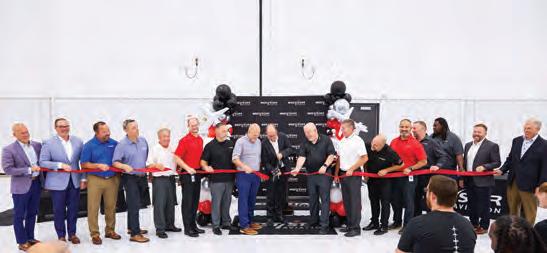
MRO provider West Star Aviation officially opened the newest hangar at its East Alton, Illinois facility with a ribbon-cutting ceremony. Construction on the $20 million Hangar 67 development began in June 2023. It adds 75,700 sq ft to the company’s operations at St. Louis Regional Airport (KALN) facility, including 40,000 sq ft of dedicated hangar space and 35,700 sq ft of support space. Among its enhancements, it will feature a new design center.
The expansion increases West Star’s hangar and shop space at KALN to 425,000 sq ft, plus 125,000 sq ft of support space, and is expected to add up to 80 new jobs. In conjunction with West Star’s hangar expansion, the St. Louis Regional Airport also completed a 56,000-sq-ft apron expansion.
KCAC Aviation has broken ground on a maintenance hangar at its Johnson County Executive Airport (KOJC) facility in Olathe, Kansas. The 30,000-sq-ft facility—expected to be completed by mid-2025—will double the company’s Part 145 maintenance capacity, which includes services ranging from routine inspections to major overhaul repairs.
KCAC is the factory-authorized sales and service center for Pilatus and Piper in the Midwest, and the additional space will allow it to maintain the growing number of those aircraft in its region.

“Our maintenance team has grown by 50% since 2021,” said Bill Lento, the company’s director of maintenance. “With this expansion, our maintenance and avionics teams will be able to work on more projects at once.”
Ontic has secured renewed investment by CVC Capital Partners as majority owner and is adding new minority investors. The investments support Ontic’s plans to continue growing and serving aircraft operators and licensors of aerospace products.
“With this new investment cycle, I look forward to welcoming many more people, licenses, and sites to Ontic as we continue to grow,” said CEO Gareth Hall.
Ontic holds nearly 200 licenses from aerospace original equipment manufacturers (OEMs) and supports more than 80,000 in-service aircraft. It manufactures more than 8,000 product lines that enable aircraft to keep flying with spares that OEMs no longer manufacture.
Based on aircraft testing and time studies, Honda Aircraft has revised the HA-420 HondaJet’s maintenance program. The new Revision J of the Airworthiness Limitation and Inspection Manual lowers the man-hours required for conducting the 600-hour maintenance interval.
Revision J optimizes the task list during the 600hour inspection, which should provide for an increase in aircraft availability for the more than 250 HondaJets that have been delivered thus far. The additional uptime will benefit HondaJet fleet operators by increasing fleet flexibility, according to the aircraft manufacturer. The company is coordinating with HondaJet service centers to implement Revision J.

OCTOBER 2, 2024 | 12:00PM EDT

Topics:
— Learn about advanced weather service can provide critical insights to help pilot navigate complex weather situations
— Discover the benefits of multi-scan weather and predictive windshear for real-time weather updates and forecasts in flight
— Understand how vertical weather can optimize flight paths, reduce delays and enhance fuel e ciency
— Gain valuable knowledge from industry experts on the latest advancements in weather services and integrated in the Collins Aerospace Flight Deck
Hosted by: Sponsored by:

DOUG ROCK
Aircraft Captain at Cook Medical

VEN SISHTLA
Associate Director
Systems Engineering, Radar Systems for Collins Aerospace
BY DAVID JACK KENNY
Bell 505 Jet Ranger X, July 30, 2024, near Killucan, County Westmeath, Ireland
The pilot-rated student and the instructor conducting his type-rating training both perished when the 2020-model helicopter crashed into a farm field during the sixth of a series of practice autorotations with power recoveries. The aircraft struck with sufficient force to bounce back into the air, clearing a wire fence and hitting the end of an adjacent building at its roof line. Initial examination of the wreckage found only impact damage, with no evidence of any prior malfunction. The student had flown just over 100 hours in Robinson R44 helicopters in the course of earning his private pilot’s license, which he received five weeks before the accident. During that time, he purchased the Jet Ranger in Malta, re-registered it in the U.S., and had it delivered to Ireland, where it was added to the training organization’s fleet. The 5,253hour instructor, whose instructor and examiner certificates were issued by the Czech Republic, was contracted to provide typerating training to four students. The accident occurred on the program’s second day.
Bell 407, Aug. 2, 2024, Raft River, Idaho
On the third leg of a public-use flight transporting U.S. Forest Service employees from Gerlach, Nevada, to Pocatello, Idaho, the pilot saw the barrier inlet air filter light activate, followed by a gradual increase in the measured gas temperature gauge. The pilot reduced power but the temperature continued to climb, exceeding its redline limit of 779 degrees C. As he looked for a suitable precautionary landing
site, engine gauges indicated an overspeed that was not arrested by increasing collective. He therefore attempted an autorotation into a cornfield but, due to the height of the corn, was unable to gauge his elevation above the terrain. The helicopter dropped the final 5 feet and landed hard, causing minor injuries to all four on board.
Cessna Citation 750, Aug. 5, 2024, Jamestown, New York
Both pilots escaped with injuries from a fire that consumed most of the Citation X after it touched down 200 feet short of Runway 25 of the Jamestown Airport, collapsing the landing gear and sliding down and then off the left side of the runway. The accident occurred shortly after departure from Chautauqua County Dunkirk Airport on a Part 91 business flight to Florida’s Fort Lauderdale Executive Airport.
Climbing through 5,000 feet, the copilot noticed a smell of electrical smoke, but the pilot did not. At 8,000 feet, it was noticeable to both pilots, though no smoke was visible.
The flight briefly leveled at 10,000 feet, but the crew did not respond to ATC’s communication to “expect Flight Level 470.”
The Buffalo approach controller then saw that they had reset their transponder code to the emergency code of 7700 and were descending through 7,800 feet. The controller advised that they were directly over Jamestown Airport without response; a few minutes later, he received “very garbled” transmissions that ended with, “We are about to land at Jamestown.”
The first officer told investigators that the pitch trim system began uncommanded nose-down inputs, accelerating the jet to “well over 250 knots.” Master caution, panel segments, and crew alerting system
messages illuminated. As he tried to contact the controller, he saw that “Comm 2 had failed, and the Garmin 5000 had big, red X’s.”
Beech King Air B100, Aug. 13, 2024, Lake Simcoe Regional Aerodrome, Barrie-Orillia, Ontario, Canada
A fire of undetermined origin consumed “the entire upper fuselage and aircraft interior” after the pilots neglected to extend the landing gear during a single-engine approach to a full stop on a company check flight. The check pilot and both pilots on the controls escaped uninjured. While the check pilot spent most of the flight observing from an unbelted divan behind the cockpit, he moved to a forward-facing seat in the rear cabin during takeoffs and landings in order to use a seat belt. During those periods, he communicated with the cockpit using the airplane’s intercom system. While flying the RNAV approach to Runway 28, the pilots read the before-landing checklist but did not extend the gear. The King Air slid about 2,500 feet after the propellers struck the pavement and came to rest on the runway. Smoke and an electrical smell began emanating from behind the left edge of the instrument panel shortly after it came to a stop. The crew shut down the aircraft and tried unsuccessfully to suppress the fire with an on-board extinguisher before being forced to evacuate.
Learjet 55, Jan. 11, 2024, Livingston, Montana
The 31,800-hour captain’s decision to land with a quartering tailwind despite reports of dry snow on the runway culminated in
the jet’s running off the end of the runway into a deep ravine, substantially damaging the fuselage and both wings. After breaking out on a GPS approach to Runway 22, the crew was advised that the runway had not been plowed. The snow depth was estimated at a quarter of an inch, and reported winds were from 090 degrees at 14 knots.
The captain landed on Runway 22 and immediately deployed spoilers and thrust reversers while applying the brakes. The jet initially slowed, but halfway down the runway the anti-skid system “was functioning continuously” and its rate of deceleration was decreasing. He tried cycling the thrust reversers, then began cleaning up the airframe before concluding that there was no longer enough room to go around.
The owner of the FBO subsequently estimated the snow depth at “around an inch” and commented that plowing had been “abysmal” that year, leaving windrows and chunks of ice on the runway and delaying several departures.
No notam for runway conditions had been issued. The FAA confirmed that the airport was not required to have a snow and ice removal plan, but grant assurances accompanying funding to provide it with a snowplow held that a notam should be issued if plowing is delayed.
The manufacturer estimated the Learjet’s landing distance on a dry runway at 3,350 feet. Loose snow with no tailwind would increase that to 6,700 feet, well beyond the length of the 5,701-foot runway. The tailwind further increased that to 7,531 feet.
Bell UH-1B, June 22, 2022, Logan, West Virginia
The Huey that crashed following engine failure was being inspected under less stringent requirements than should have applied, according to the NTSB.
Damage to the T53-L-11D turboshaft engine’s compressor section, gas-producer
turbine, and exhaust di ff usor rear bearing cover was not detected in a previous inspection, and following the engine failure, the helicopter ran into powerlines during an attempted forced landing. All six onboard were killed.
The flight was part of the “7th Annual Huey Reunion” celebration held at Logan County Airport in West Virginia. During the event, visitors were invited to fly in the helicopter, and one person could pay a “required” donation of $250 to fly from the right seat for 30 minutes with no experience, according to the NTSB.
The helicopter’s operator, Marpat Aviation, held a special airworthiness certificate in the experimental exhibition category issued by the FAA’s Charleston, West Virginia Flight Standards District Office (FSDO). However, Marpat Aviation “did not hold a living history flight experience exemption for the helicopter,” the NTSB explained, “which would have allowed the helicopter to be operated for compensation.”
Marpat also failed to inform the FAA of its plans to fly the helicopter at the Huey Reunion, which it was required to do as part of operating limitations on the helicopter’s special airworthiness certificate.
As part of the special airworthiness certificate, the FSDO issued operating limitations that included specific inspection standards. These turned out to be the provisions of Appendix D to FAR Part 43. “We found that the inspection standards in Part 43 Appendix D did not have sufficient scope and depth for inspecting former military turbine-powered rotorcraft because the standards comprised generic inspection criteria for aircraft systems and components undergoing annual and 100-hour inspections,” the NTSB wrote.
“We also found that the damage to the engine exhaust diffuser (cracking) and the rear bearing cover (outer flange separation) were significant long-term engine issues that could have been detected if the operator, Marpat Aviation, had used more
detailed inspection criteria and more frequent inspection intervals than those in Part 43 Appendix D. The inspection standards in Part 43 Appendix D did not have sufficient scope and depth for inspecting former military turbine-powered rotorcraft, especially given the complex design of typical former military rotorcraft,” the Safety Board continued. “For example, Appendix D stated that a reciprocating aircraft engine needed to be inspected for proper cylinder compression but did not specify critical turbine engine components for inspection, such as an engine compressor or turbine, and the necessary inspection steps to ensure the continued airworthiness for a complex turbine-powered aircraft.”
The probable cause of the accident “was the operator’s failure to adequately inspect the former military turbine-powered helicopter, which allowed an engine issue to progress and result in a loss of engine power and subsequent loss of control after the helicopter struck powerlines during a forced landing.”
The NTSB cited as causal to the accident “the FAA’s inadequate inspection and maintenance standards” for operating former military aircraft under a special airworthiness certificate; the operator using the lesser standards instead of the more rigorous standards, which had been used previously on that helicopter; and inadequate oversight of the operator by the FAA.
In the examination of the engine after the accident, NTSB investigators “found static damage in the compressor section; rotational damage in the gas-producer turbine; and additional damage to the exhaust diffuser, rear bearing cover, No. 2 bearing, and two power turbine blades.” Evidence showed that the main rotor blades didn’t show the significant impact fragmentation that would be expected if they were being powered, thus there was a partial or total loss of power before impact.
Marpat had “no comment” to AIN ’s inquiry on the report. z
BY GORDON GILBERT
The FAA has granted a 60-day extension, to Oct. 18, 2024, for comments to draft Advisory Circular (AC) 43-9D covering maintenance record requirements. The revised AC would replace the current version of the guidance document that’s been in use since 1998. The AC provides acceptable means of showing compliance with general aviation record-making and record-keeping requirements of FAR Parts 43 and 91. The extended deadline results from a joint request for additional comment time by 11 trade organizations, including the Aeronautical Repair Station Association, Aircraft Electronics Association, Aircraft Owners and Pilots Association, General Aviation Manufacturers Association, and National Air Transportation Association.
Oct. 21, 2024
One of the consequences of the FAA’s ongoing investigations into alleged wrongdoing by Boeing during certain airframe design, development, and production procedures ostensibly made under the manufacturer’s organization designation authorization (ODA) is that the agency has issued draft Revision C of its ODA Order 8100.15. This order establishes the ground rules for a manufacturer to obtain ODA approval and provides the procedures for FAA personnel conducting oversight of ODA holders. Under draft Revision C, 54 changes are proposed that aim to tighten up manufacturer ODA approval rules and to improve FAA oversight of ODA holders. Comments are due by Oct. 21, 2024.
Oct. 21, 2024
This FAA rule prohibits civil aircraft operations conducted with supplemental restraint systems (SRS) unless operators meet certain requirements for ensuring passenger and crewmember safety during all phases of flight. The rule addresses recommendations from the NTSB and the DOT Office of Inspector General. Additionally, this rule will codify, with updates, an Emergency Order of Prohibition currently in effect addressing
safety concerns regarding the use of supplemental restraints. The rule applies to all civil aircraft operations conducted using SRS, except flights involving parachute operations, rotorcraft external-load operations, or public aircraft operations. The rule goes into effect on Oct. 21, 2024.
Oct. 24, 2024, and April 25, 2025
Certain air carrier airports certified under FAR Part 139 are required to submit an implementation plan for a safety management system (SMS) on the following deadlines: April 24, 2024, for airports designated as hubs; Oct. 24, 2024, for airports with 100,000 or more annual operations over the previous three years; and April 25, 2025, for airports classified as port of entry, landing rights, user fee, and international facilities.
Oct. 31, 2024
Nav Canada, the country’s provider of civil air navigation services, will incrementally decommission all ATIS telephone voice broadcasts between Oct. 31, 2024, and March 31, 2025. To continue providing remote access to ATIS, Nav Canada has begun upgrading technology to allow the promulgation of ATIS through a new web page, including ATIS sites that do not currently have phone service. The population of ATIS information on the web page
began in March 2024 and is planned to continue until December 2024. The appropriate aeronautical publications are scheduled to be amended on Oct. 31, 2024, to remove phone number information.
Oct. 31, 2024
This proposed rulemaking would impose new design standards to address cybersecurity threats for transport category airplanes, engines, and propellers by introducing type certification and continued airworthiness requirements to protect equipment, systems, and networks against intentional unauthorized electronic interactions that could create safety hazards. Because the substance of the proposals has been applied as “special conditions” to address product cybersecurity since 2009, the FAA would continue to apply the same substantive requirements but incorporate them under existing certification regulations. This would reduce or eliminate the need to use the time- and cost-consuming special conditions method of compliance.
Dec. 1, 2024
On or about Dec. 1, 2024, the FAA is scheduled to transition its notam format to align with international standards. The agency said the transition to the new format will ensure U.S. notams are compliant with
standards set by the International Civil Aviation Organization (ICAO). According to the FAA, the new format will result in improved accuracy and accessibility of notam data for pilots, dispatchers, and other notam consumers, provide notam consumers with one consistent format for domestic and international operations, and allow for enhanced search, sorting, filtering, and archiving capabilities of notam data. An advisory circular will be published when the new format becomes effective.
4, 2024
This notice of proposed amendment (NPA) from EASA establishes initial and continuing airworthiness provisions for certifying unmanned aircraft systems (UAS). The proposals include new and amended acceptable means of compliance and guidance materials. The NPA also addresses new operational and mobility concepts based on innovative technologies and aims to promote UAS acceptance by European citizens. Comments on these proposals are due by Dec. 4, 2024.
1, 2025
EASA postponed the requirement for certain large airplanes to be equipped with an emergency locator transmitter with distress tracking capability: ELT(DT). An ELT(DT) is designed to activate automatically in flight when it detects conditions indicative of a distress situation, or the flight crew can manually activate it. Under the new rules, airplanes with a mtow of more than 27,000 kilograms (above 59,500 pounds) and first issued a CofA on or after Jan. 1, 2024 will be required by Jan. 1, 2025 to be equipped with an ELT(DT) that autonomously transmits information from which the aircraft's position can be determined by the operator at least once every minute when in distress.
For the most current compliance status, see: ainonline.com/compliance









Duncan Aviation is the world’s largest family-owned MRO center supporting business aircraft engines and APUs. We are authorized by Honeywell, Pratt & Whitney, GE, Williams International, Rolls Royce, and Hamilton Sundstrand to perform a broad spectrum of engine services, including MPI, CZI, HSI, and other major maintenance.
Experience. Unlike any other. www.DuncanAviation.aero/engine
BY JESSICA REED
Transportation Secretary Pete Buttigieg reappointed NBAA ’s Doug Carr to the Aviation Rulemaking Advisory Committee (ARAC). Carr, who is senior v-p of safety, security, sustainability, and international operations for NBAA, will represent aircraft owners and operators under Parts 91 and 135 on the ARAC.

MD Helicopters (MDH) made several changes to its executive leadership team. Daniel Searcy, previously senior director of aftermarket customer support, was promoted to v-p of aftermarket. Todd Heussner, formerly senior director of supply chain at MDH, has taken on the role of v-p of operations and supply chain. Fred Kaplan was appointed as the company’s CFO, bringing more than 35 years of experience including serving as CFO at O’Hare International, Midway International, and PhoenixMesa Gateway airports.
Reynolds Jet appointed James Murray—the company’s president since 2021—as CEO. Murray, a commercial pilot, has worked in the private aviation industry for more than two decades.

Wheels Up Experience chief financial officer Todd Smith is leaving the company for a new role, and chief legal officer Laura Heltebran is departing to “pursue other opportunities,” the company announced in August. Matthew Knopf has joined Wheels Up as chief legal officer and secretary, and Eric Cabezas is acting as interim CFO while a search is conducted for Smith’s replacement.
Thomas Illner , previously CEO of Lufthansa Technik’s (LHT) BizJet subsidiary, has taken on the position of managing director and head of the Americas region at Lufthansa Technik Component Services Berit Plewinsky was promoted from senior director of product sales and fulfillment single events and closed loop for LHT’s aircraft component segment to the position of v-p of commercial aircraft component services. Other recent changes to the company’s leadership structure include Tim-Oliver Fedeler’s promotion to managing director of Lufthansa
Technik Component Services Asia Pacific and senior director of product sales and fulfillment for the same region. Jens Michel became the v-p of sales for North East Asia, and Alexander Sixt was appointed as managing director at Lufthansa Technik Intercoat Fabian Nagel has taken over as LHT’s v-p of sales for VIP special aircraft services, taking over from Wieland Timm, who is retiring after more than 20 years with the company.
Business aviation support services provider ACASS has hired Paul Ludick as sales director for Africa.
Ludick’s 26-plus years of experience in the aviation industry include serving as CEO of ExecuJet Aviation Nigeria and as sales director for Luxaviation ExecuJet in South Africa.

Tom Phillips was hired for the role of regional director of Satcom Direct’s Asia-Pacific operation. Phillips has worked for Satcom Global for more than 10 years, including leading the company’s Singapore operation.
Smart Aviation expanded its team with the hiring of Max Cassar and Scott Harding as trainee aircraft charter brokers. The new hires will work across both the commercial and private jet departments within the company.
Patricia Nagata Hamza was appointed to the Advanced Air Mobility Institute’s board of directors as v-p of business intelligence. Hamza previously worked for 22 years at Embraer, where she led business strategies that shaped the AAM industry.

Bismarck Aero Center appointed David Pethel and Mason Lindsey as full-time A&P maintenance technicians. Pethel recently earned his A&P license from Lake Area Technical College, and Lindsey received an associate degree in aviation maintenance from Lake Superior College in Duluth in addition to obtaining his A&P license.
Bill Otte was promoted to the role of turbine engine service sales representative for Duncan Aviation’s Pratt & Whitney engine program. Otte’s 40 years of experience in aviation includes
working as an A&P technician and as a director of maintenance.
Muzamil El-Zein was promoted to private jets director at Air Charter Service’s Dubai office. El-Zein’s previous experience includes working at Eastern SkyJets. He has been with Air Charter Service for 10 years.
The National Air Transportation Association promoted Jake Legere to associate v-p of sales and marketing. Legere joined the association in 2015 and most recently served as managing director of sales and marketing.

DC Aviation added managing director Svenja Wortmann to its board of directors. Wortmann previously served as DC Aviation’s authorized signatory and has been with the company since 2007.
Boutsen Aviation hired Roxanne Pedersen as head of marketing and Jonathan Courtin as market analyst. Pedersen has a master’s in digital marketing and events management from the University of Monaco. Courtin trained at the CAE Oxford Aviation Academy and received his airline transport pilot license; he also has prior experience in private aviation working for Blade Europe. Boutsen also appointed Filippo Arcaleni as its sales representative and business developer for Malta, Italy, and Southern Europe. z
Susan Northrup, the FAA’s federal air surgeon, was recognized as this year’s recipient of the Laura Taber Barbour Air Safety Award. Northrup is a private pilot and retired U.S. Air Force colonel who has conducted research and authored publications on cabin air quality, bioterrorism, how sleep aids impact pilots, and other critical issues.
NBAA is honoring Sydney Bosmans for her quick thinking and professionalism that saved the lives of two passengers from the fatal Hop-A-Jet aircraft crash in February in Naples, Florida. Bosmans will receive the Above and Beyond Award for Heroic Achievement from NBAA during a special reception held during NBAA-BACE in October in Las Vegas. “Faced with a harrowing, life-threatening crisis, Sydney Bosmans maintained calm and clear thinking and drew upon her professional
The business aviation community is mourning the loss of Nick Fadugba, whose contributions to the industry—particularly in Africa—have left a profound impact. Fadugba was widely respected for his leadership, advocacy, and unwavering dedication to advancing aviation across the African continent.
Fadugba was perhaps best known for his role as chair of the African Business Aviation Association (AfBAA) from 2018 to 2023. During his tenure at AfBAA, he played a pivotal role in promoting business aviation within Africa, earning recognition for his integrity and vision. His e orts were not confined to business aviation alone; Fadugba was also the founder and CEO of African Aviation Services. His commitment to the industry extended beyond advocacy. Fadugba was instrumental in initiating high-level international aviation conferences specifically tailored for Africa. He also pioneered aviation publishing in Africa with the launch of African Aviation, a publication dedicated to promoting the African aviation industry on the global stage. Fadugba’s contributions were widely recognized, including his election as secretary general of the African Airlines Association and his advisory role to the Association of African Aviation Training Organizations. He was also a Fellow of the Royal Aeronautical Society, a prestigious honor reflecting his achievements in the field.
training to quickly identify a means of escape that saved three lives,” said NBAA president and CEO Ed Bolen. “Safety is at the forefront of our industry, and Sydney’s actions demonstrate how safety is also the paramount duty for all cabin personnel.”
NBAA will honor long-time former Bombardier leaders Laurent and Pierre Beaudoin with the association’s Meritorious Service to Aviation Award. Laurent Beaudoin joined Bombardier in 1963, became president three years later, and was ultimately named CEO in 1979. He took the company public and ventured into the aviation industry with the 1986 purchase of Canadair. Laurent’s son, Pierre Beaudoin, joined Bombardier in 1985 and became president of the company’s business aircraft unit in 2001 before stepping into the role of president and CEO of the overall company in 2008 and ultimately chairman. The award will be presented on October 22 at NBAA-BACE 2024.
PAUL VAN KLEY (BOMBARDIER)
“Paul is one of those people who seems to take pleasure in assisting in helping others out. I can’t remember in the almost 20 years that I’ve known him that there has ever been more than 10 or 15 minutes that I did not hear back from him when making a request for help. Never hesitates to come to the site of the aircraft, even get his hands dirty if he needs to help out. A 10+ without a doubt!”
MARK VESELY (COLLINS AEROSPACE)
“Provides help to fix everything.”
PHILIPPE VONTRAT (JET AVIATION-BASEL)
“Most customer help-oriented employee.”
MARC WALKER (BOMBARDIER)
“Above and beyond.”
NIGEL WARD (DASSAULT FALCON JET)
“He lives an hour away and has dropped everything and positioned to our hangar to provide assistance.”

MARK WEBSTER (ROLLS-ROYCE)
“Very proactive in helping we customers with all things RollRoyce. He is always working above and beyond. Will respond to any email at anytime. Basically, a human robot who’s working 24/7. Mark always has the answers and fights for the customer every time.”

BEN WESTERMAN (TEXTRON AVIATION)
“Ben is highly knowledgeable, and if he doesn’t know the answer, he will find out.”
JOERG WOLTER (ROLLS-ROYCE)
“A joy to work with. Always ready for help the operators.”

WAYNE WOYTKIW (AIRBUS HELICOPTERS)
“Very honest.”
ROBERT WYATT (BOMBARDIER)
“He was very helpful.”
YOU CHOO YOUNG
(LEONARDO HELICOPTERS KOREA)
“Goes above and beyond for support” z

JAMES HOLAHAN (1921-2015), FOUNDING EDITOR, WILSON S. LEACH, FOUNDER & CHAIR EMERITUS
EDITOR-IN-CHIEF – Matt Thurber
MANAGING EDITOR – Charles Alcock
DIGITAL EDITOR – Chad Trautvetter
EDITOR AIN MONTHLY MAGAZINE – Kerry Lynch
BUSINESS AVIATION SERVICES EDITOR – Curt Epstein
TECHNOLOGY EDITOR – Hanneke Weitering
COPY EDITOR – Jessica Reed
NEWS REPORTER – Sarah Rose
CONTRIBUTORS – Cathy Buyck – Europe, David Donald – U.K., Mark Huber – Rotorcraft, Jennifer Leach English, David Jack Kenny – Safety, Gordon Gilbert , Jennifer Meszaros – Southeast Asia, Dale Smith, Richard Pedicini, James Wynbrandt
PRODUCTION MANAGER – Martha Jercinovich
GRAPHIC DESIGNER – Grzegorz Rzekos
DIRECTOR OF VIDEO – Ian Whelan
SENIOR DEVELOPER – Cameron MacPherson
FRONT END DEVELOPER – David Lohmeyer
EXECUTIVE CHAIR – Dave Leach
PRESIDENT – Ruben Kempeneer
HEAD OF PEOPLE & BRAND – Jennifer Leach English
SENIOR DIRECTOR, INDUSTRY AFFAIRS AND EVENTS – Nancy O’Brien
ADVERTISING SALES
SALES TEAM LEAD - Victoria Tod – Northeastern U.S./Eastern Canada/United Kingdom, +1 (203) 733-4184
Michelle James – Western U.S./Western Canada, +1 (520) 343-0236
Susan Joyce – Midwestern U.S., Southeastern U.S./Caribbean/Brazil, +1 (303) 641-5505
Diana Scogna – Europe/Middle East, +33 6 62 52 25 47
DIRECTOR OF MARKETING AND CLIENT SERVICES – Lisa Valladares
AUDIENCE DEVELOPMENT DIRECTOR – Eileen Silberfeld
MARKETING SPECIALIST – Alyssa Barry
SOCIAL MEDIA MARKETING – Zach O’Brien
SALES ADMINISTRATOR – Cindy Nesline
MANAGER OF FINANCE & HUMAN RESOURCES – Tracy Britton
ACCOUNTS PAYABLE – Mary Avella
ACCOUNTS RECEIVABLE – Bobbie Bing
U.S. HEADQUARTERS
214 Franklin Ave., Midland Park, NJ 07432, +1 (201) 444-5075
Advertising Inquiries: +1 (201) 345-0085, adsales@ainonline.com
Circulation Inquiries: +1 (201) 345-0085, subscriptions@ainonline.com
WASHINGTON, D.C. EDITORIAL OFFICE: Kerry Lynch: klynch@ainonline.com, Tel: +1 (703) 969-9195
EUROPEAN EDITORIAL OFFICE: Charles Alcock: calcock@ainonline.com, Tel: +44 7799 907595
Aviation International News (ISSN 0887-9877) is published twelve times per year (monthly). Periodicals postage paid at Midland Park, N.J., and additional mailing o ces. Postmaster: Send address changes to AIN Media Group, 214 Franklin Ave., Midland Park, NJ 07432. Allow at least eight weeks for processing. Include old address as well as new, and an address label from a recent issue if possible.
Subscription inquiries: +1 (201) 345-0085 or email: subscriptions@ainonline.com.
Aviation International News is a publication of AIN Media Group, 214 Franklin Ave., Midland Park, NJ 07432; Tel.: +1 (201) 444-5075.
Copyright © 2024 All rights reserved. Reproduction in whole or in part without permission of AIN Media Group is strictly prohibited. AIN Media Group publishes Aviation International News, AINalerts, AINonline, Business Jet Traveler, BJTwaypoints, ABACE Convention News, Dubai Airshow News, EBACE Convention News, Farnborough Airshow News, FutureFlight.aero, HAI Convention News, LABACE Convention News, MEBAA Convention News, NBAA Convention News, Paris Airshow News, Singapore Airshow News, Mobile Apps: Aviation International News; AINonline. PUBLICATION MAIL AGREEMENT NO. 40649046 RETURN UNDELIVERABLE CANADIAN ADDRESSES TO: PITNEY BOWES INTERNATIONAL MAIL, STATION A, P.O. BOX 54, WINDSOR, ON, N9A 6J5, returns il@imex.pb.com.
For feedback, letters to the editor, or other editorial needs, please contact AIN’s Editors at ainedit@ainonline.com
November 18-19, 2024 | Orlando, Florida
AIN’s Corporate Aviaton Leadership Summit Mx event is a fully-hosted, invitaton-only event for Directors of Maintenance.
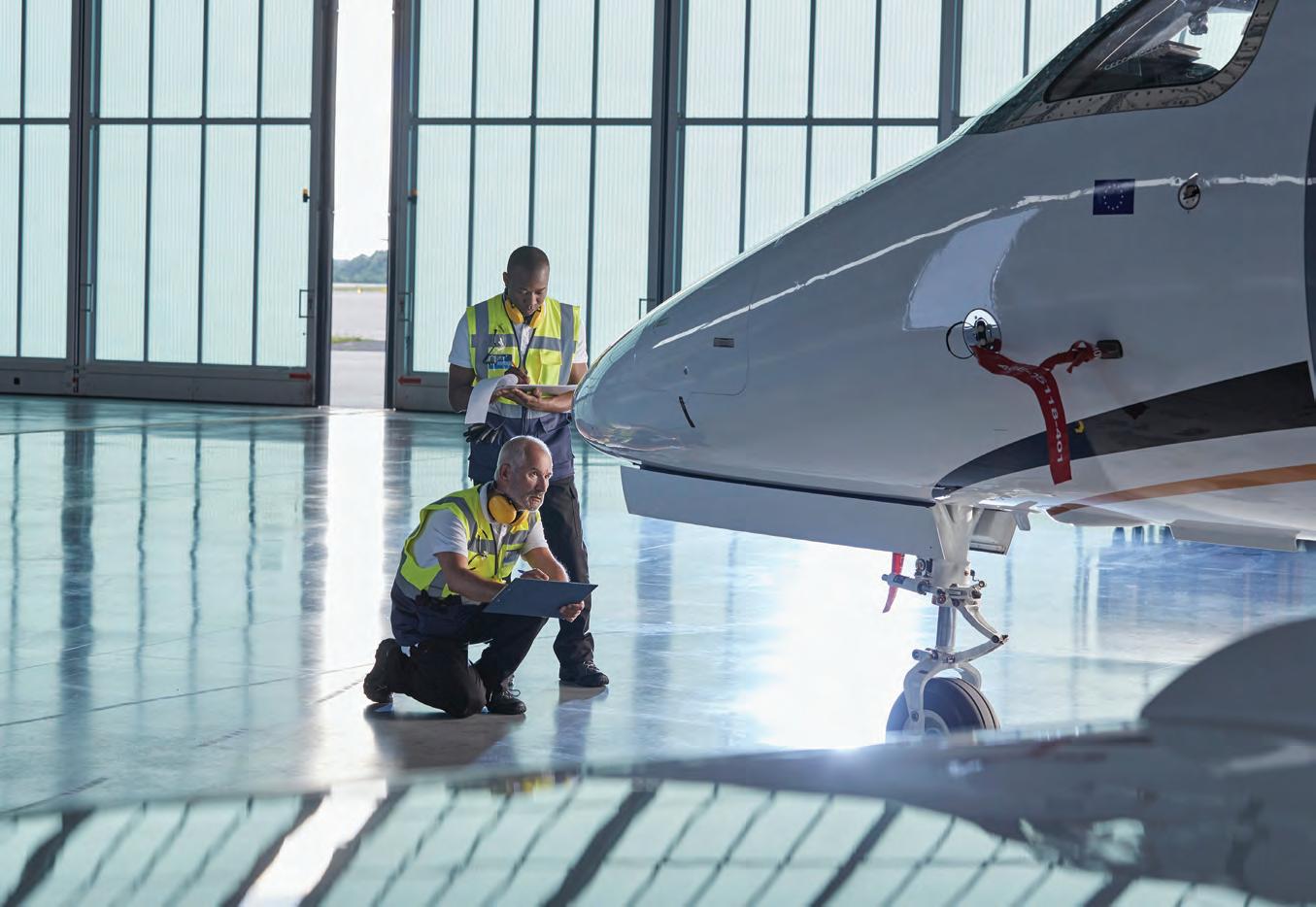
“The AIN CALS event has been a refreshing experience for leaders within the corporate aviation community and the vendors that support their businesses. 100% engagement for 2.5 days. Truly a working event that leaves us all a bit tired but very enthused!” – 2024 CALS West fight department atendee












